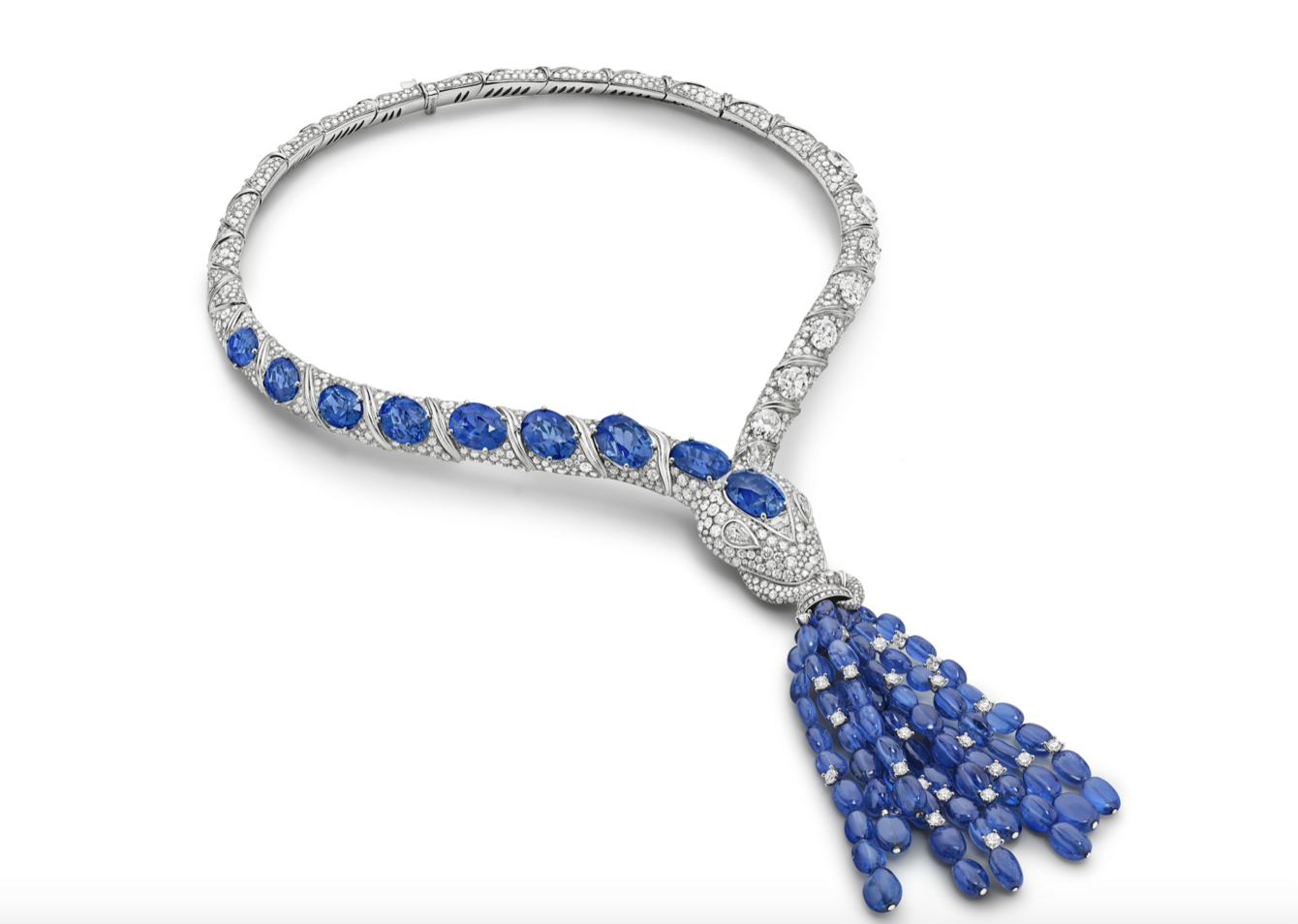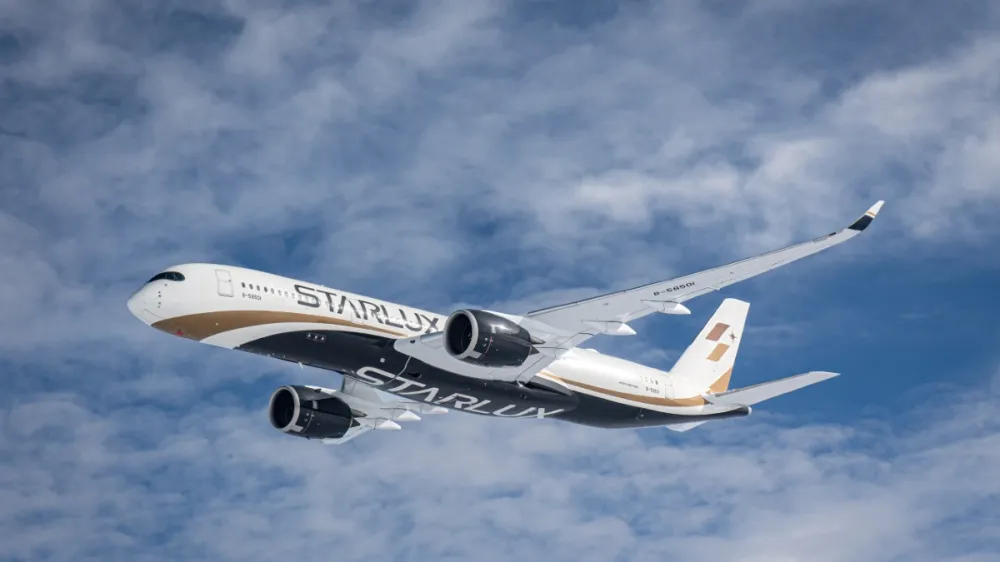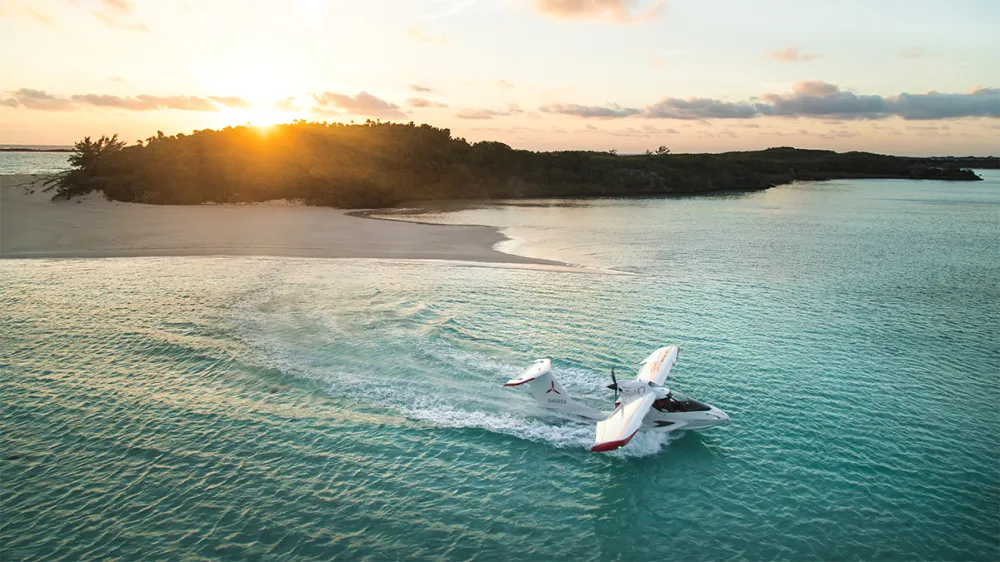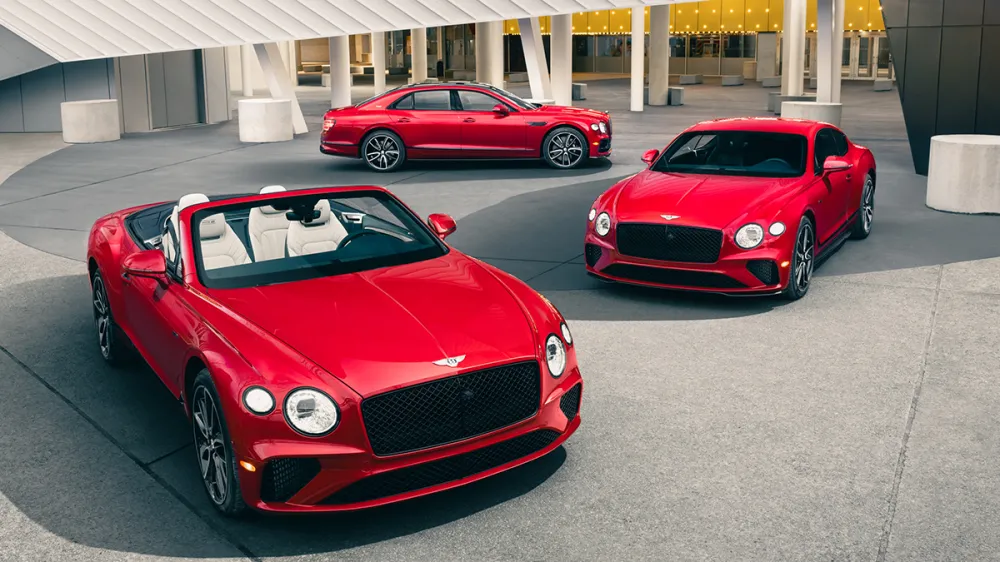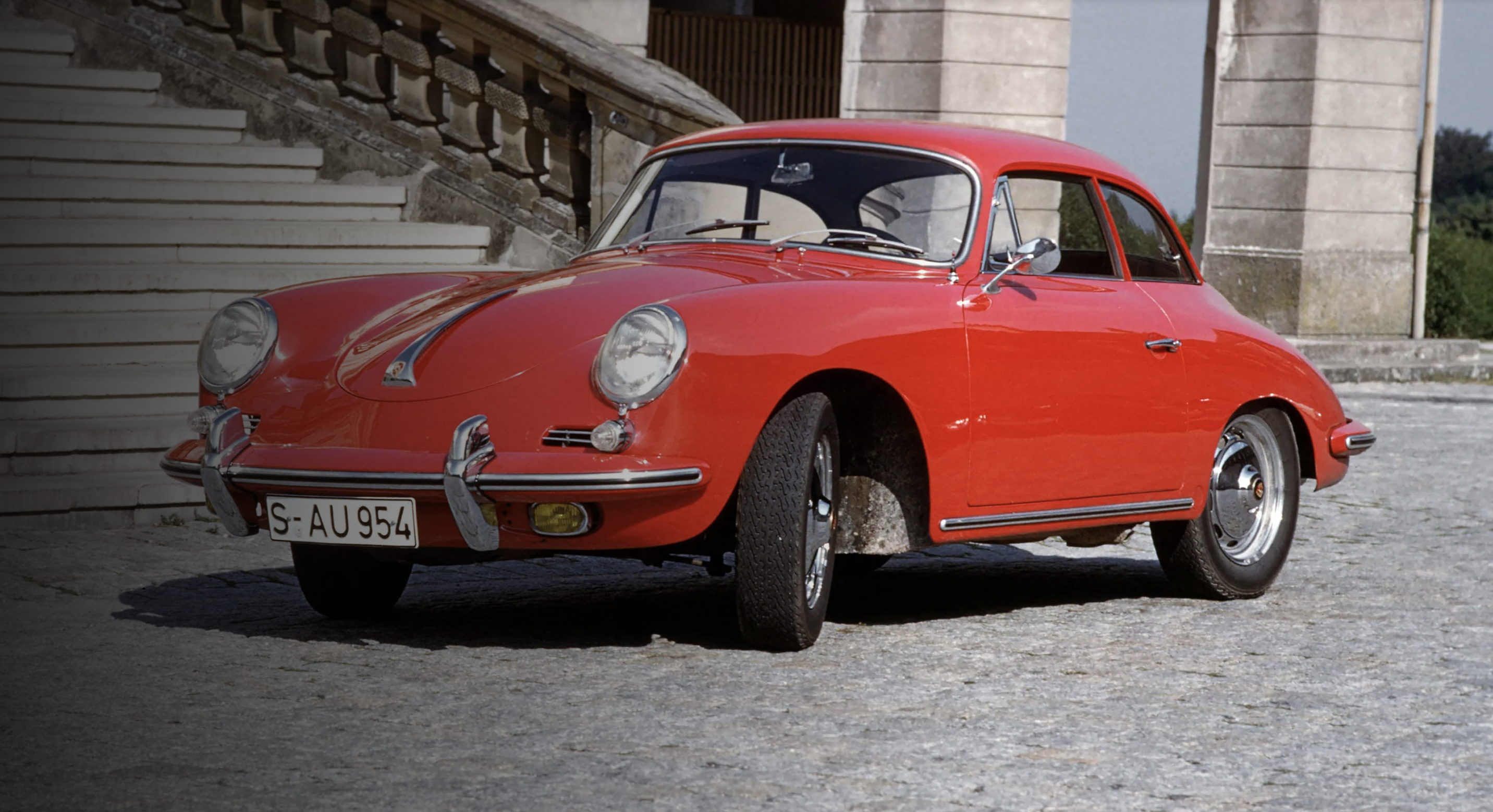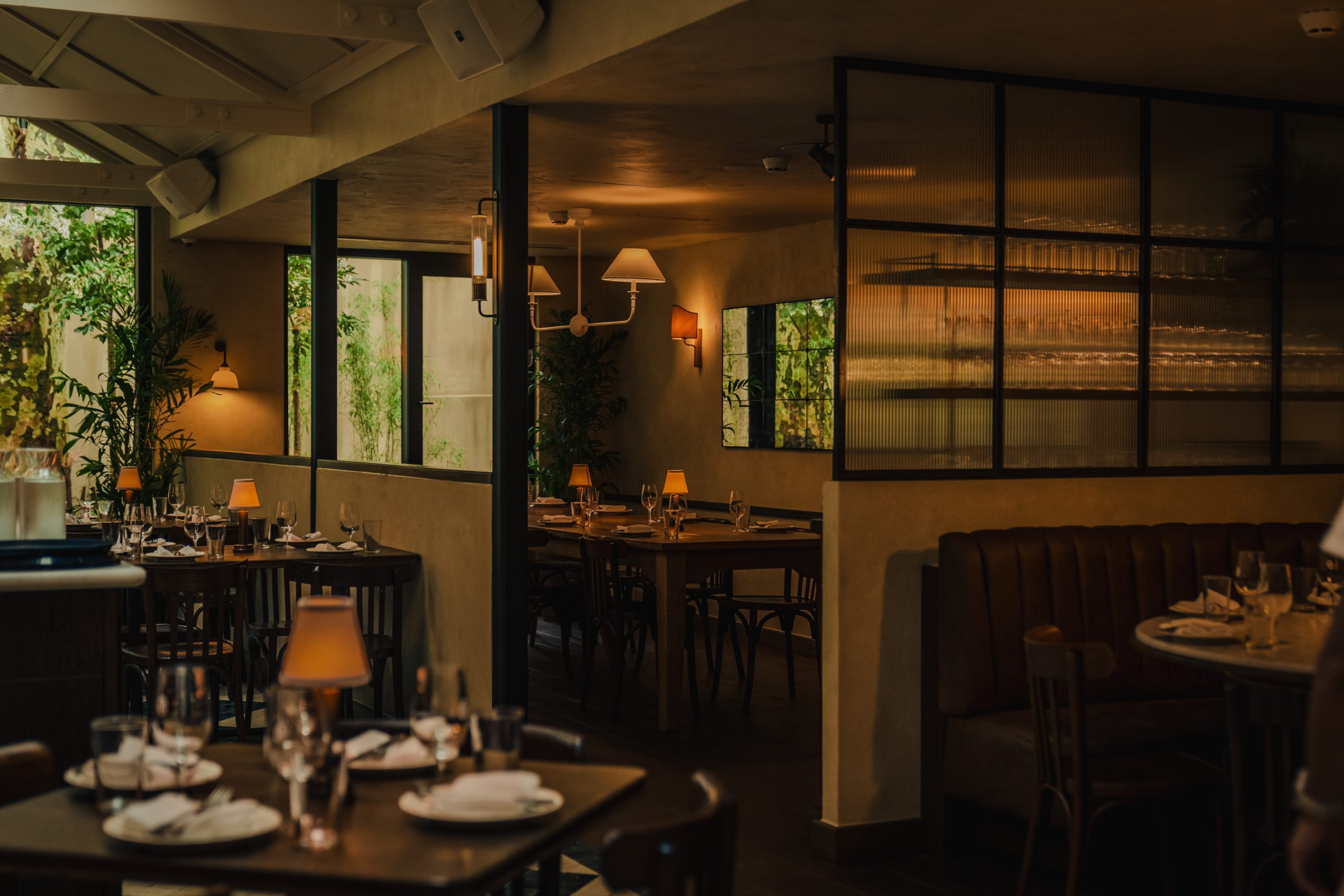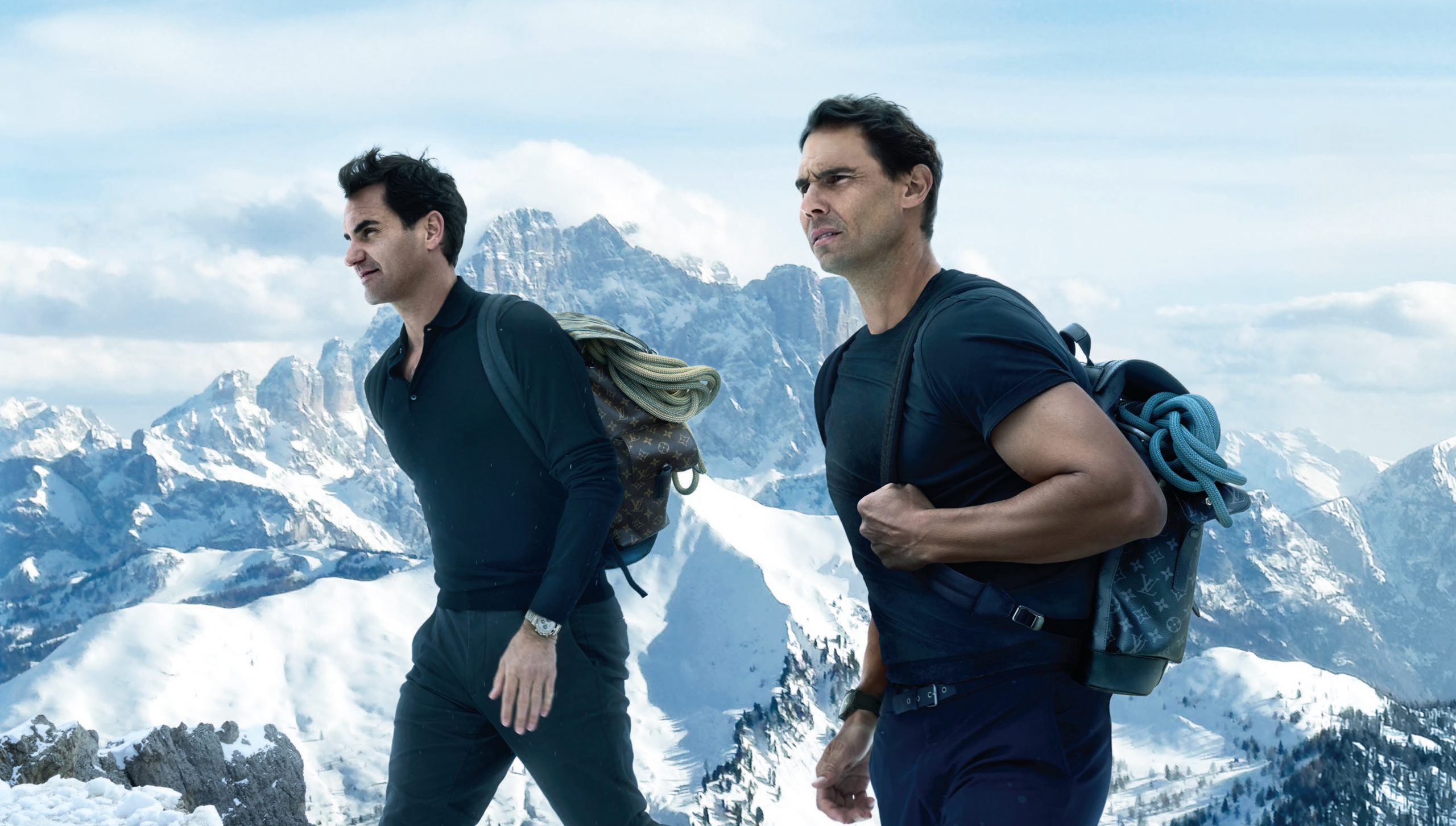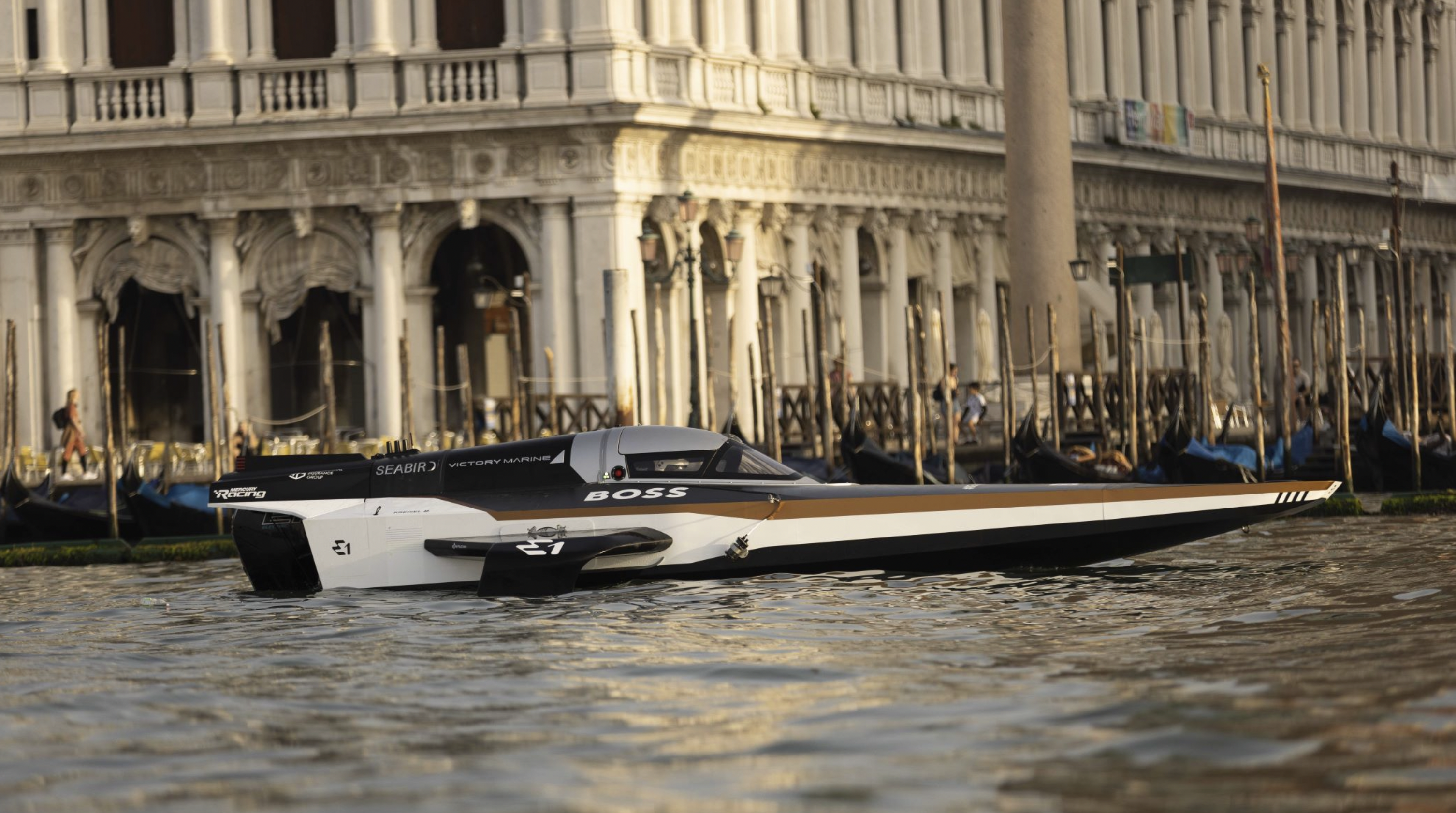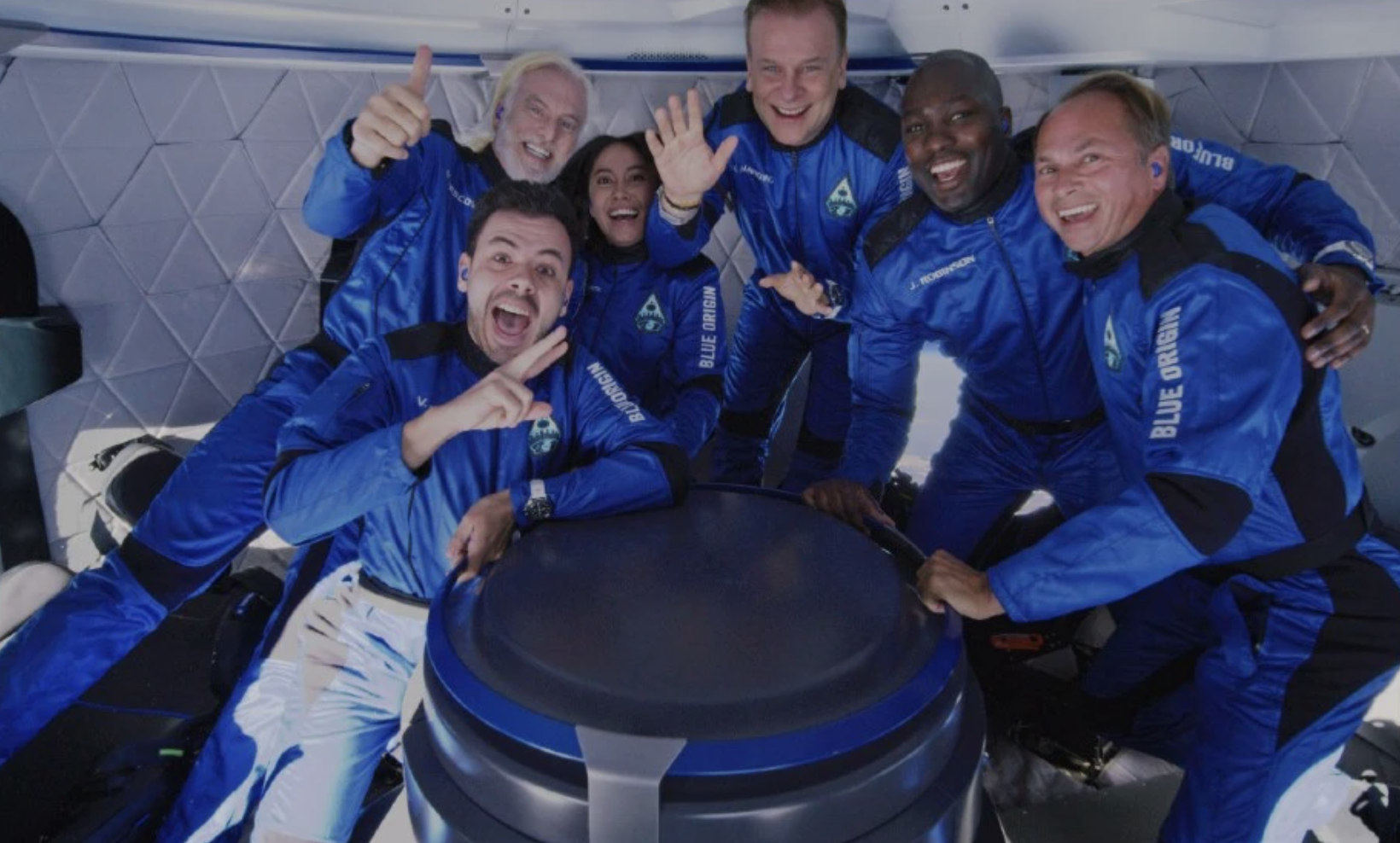
Blue Origin’s Latest Space Mission Successfully Returns To Earth
The oldest and youngest members of space tourism’s most diverse crew talk about their successful flight over the weekend.
Related articles
The six-person crew included Katya Echazarreta, 26, an engineer and science communicator originally from Guadalajara, Mexico, who was the youngest person on the mission and the first Mexican-born woman to travel to space.
“Looking down and seeing how everyone is down there, all of our past, all of our mistakes, all of our obstacles, everything—everything is there,” she told CNN Business. “And the only thing I could think of when I came back down was that I need people to see this. I need Latinas to see this. And I think that it just completely reinforced my mission to continue getting primarily women and people of colour up to space and doing whatever it is they want to do.”

Back to Earth. The crew celebrate touchdown after a 10-minute voyage beyond the Karman Line. Courtesy Blue Origin
While the others on the flight paid for their seats, Echazarreta was chosen by a nonprofit called Space for Humanity to fill an empty seat. Echazarreta, now working on a master’s degree in engineering at Johns Hopkins University, previously worked at NASA’s Jet Propulsion Laboratory and hosts a science-focused YouTube series. She is also a presenter on the CBS weekend show “Mission Unstoppable.”
Echazarreta said she has been motivated to excel in engineering since her time at NASA. “There are so many people in this world who dream about the same things that I was dreaming about. And yet I’m not seeing them here. So what’s happening?” she said. “It was not enough for me to have made it and to be there. I needed to also help bring others with me.”
Victor Vescovo, 56, the oldest member of the crew, had another motivation: exploration. Vescovo has explored the deepest parts of the oceans with his submersible DSSV Limiting Factor and mothership Pressure Drop.

Jaison Robinson and Victor Vescovo experiencing weightlessness. Courtesy Blue Origin
“It’s fun to be an aquanaut, mountain climber and astronaut,” Viscovo, 56, told Robb Report. “It’s a juxtaposition of extremes that actually share a great deal of rhyme in their extremes.”
Like Echazarreta, Viscovo said the view was more than memorable. “The complete curvature of the Earth, and seeing the thin fragile, atmosphere and this beautiful blue-and-brown planet that we have, and then the blackness of space,” he said. “To have that right in front of you was a transformational experience.” Vescovo was also struck by the complete contrast of black space and blazing sun.
The newly minted astronaut was surprised by the comfort of the flight, especially since his body was subjected to over 5-G force. He has flown fighter jets before, but since he was lying down in the capsule, it didn’t have the same sensory impact. “It was really a pleasant experience,” he says. The 10-minute flight also didn’t include a kind of time warp where time stood still for such dramatic speeds and sitting for a few minutes on the edge of space. “Oh, it seemed like just ten minutes, but it was the best ten minutes of my life.”

The reusable rocket touching down at Blue Origin’s launchpad in Texas. Courtesy Blue Origin
Another crew member who had gone to space, Evan Dick, advised his fellow crew members to forego the usual somersaults when they reached the Karman Line, and instead look out the windows. “He told us to look, really look and internalize the beauty of the Earth,” says Vescovo. “You do see how there are no dividing lines and how we are one species. It’s what they call the ‘Overview Effect,’ and it was very clear to me.”
The flight was so exceptional that Vescovo would like to do another—maybe even orbit the Earth. “It really intensified my love of space, but also of exploration—including continued exploration of the oceans,” he says. “One of my fellow crew joked that I don’t like to be at sea level. There’s some truth to that.”
Subscribe to the Newsletter
Recommended for you
Asia Just Got a New Luxury Airliner, Here’s What It’s Like Onboard
Starlux wants to be “the Emirates of Asia,” but those are pretty big shoes to fill. We take a roundtrip flight from San Francisco to Taipei to sort reality from hype.
By Rachel Dube
April 8, 2024
The Seaplane’s Second Act
After years of obsolescence, flying boats are experiencing a glamour-fuelled revival.
By Basem Wasef & Michael Verdon
April 3, 2024
You may also like.
You may also like.
Federer and Nadal Team Up in New Louis Vuitton Ad
Just in time for the French Open, Louis Vuitton serves up a winning new campaign.
They have scaled the dizzying heights of tennis, and now great rivals and friends Roger Federer and friend Rafael Nadal climb a majestic mountaintop in the new Louis Vuitton campaign.
The latest installment of the LV’s storied Core Values series of ads, once again shot by renowned portrait photographer Annie Leibovitz, reunites two tennis legends who have not faced off against each other since Wimbledon 2019. (Federer retired in 2022 and in his last match teamed up with Nadal in doubles, with the pair famously crying and holding hands afterwards.)
Three thousand metres high in the Italian Dolomites and in less familiar attire than their usual on-court drag, Federer sports a classic Monogram Christopher Backpack that is every bit as elegant as his balletic prowess, while Nadal’s is a fittingly dynamic Monogram Eclipse version.
The campaign recalls the brand’s 2010 grouping of soccer legends Diego Maradona, Pelé and Zinedine Zidane.
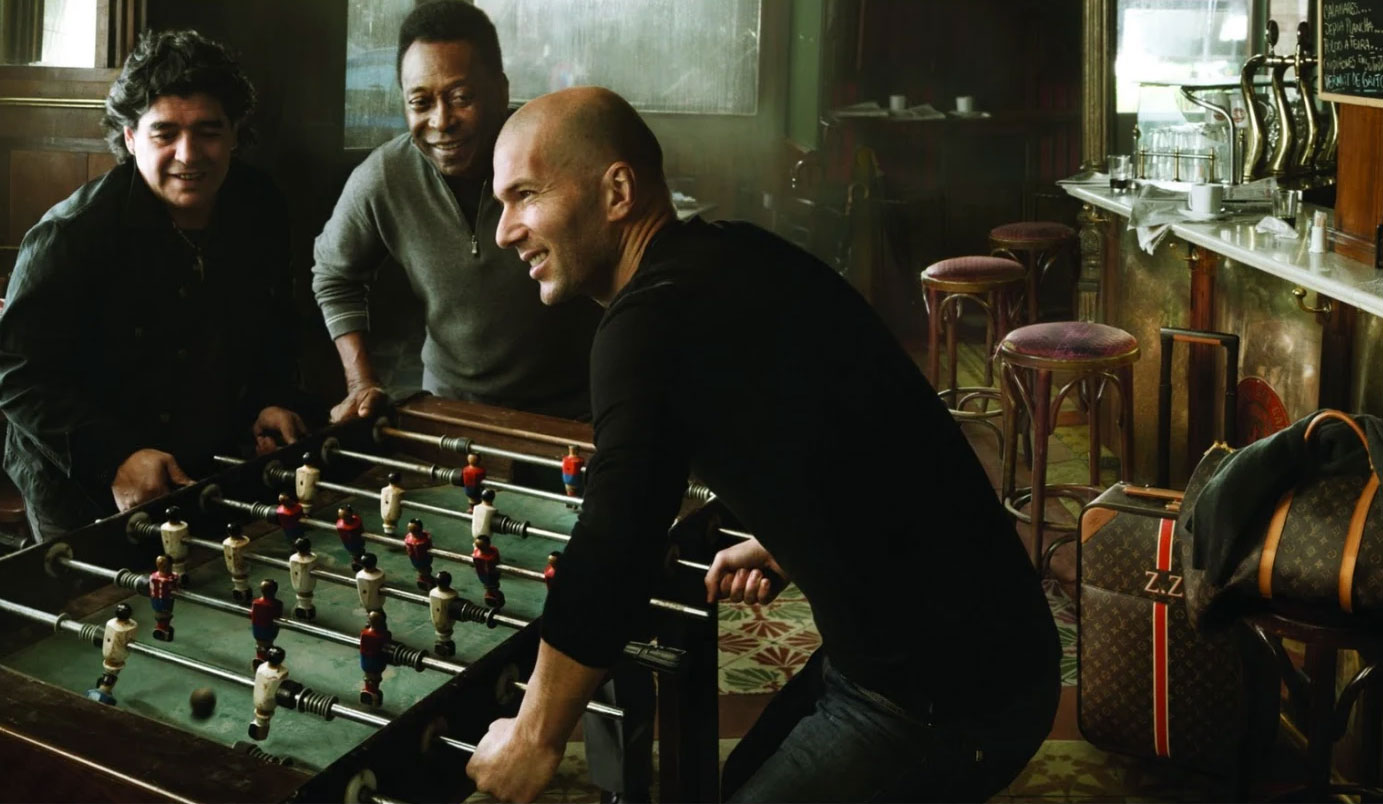
“I know how many important icons have been part of this campaign,” says Nadal. “Being part of it is something I am very proud of—especially sharing it with Roger who has been my biggest rival and is now a close friend.”
Federer adds, “It’s a unique opportunity to be working on this campaign with Rafa. How we could be such great rivals and at the end of our careers be beside each other doing this campaign is very cool.” Tennis fans everywhere agree.

Watch the behind-the-scenes video shot of the new Louis Vuitton campaign.
You may also like.
Will Smith, Tom Brady And More Celebs Are Team Owners in a New Electric-Boat League
Will all that star power deliver?
At one point during the debut broadcast of the world’s first electric-boat racing circuit, an on-air host stands on a platform overlooking the water and pummels the camera with enthusiasm: “I hope you’re ready for a landmark moment that can change the future of water transportation. The nerves, the excitement, the energy, it’s electric!” Behind her, a few dozen people mill about, leaning on a rail, drinking coffee, staring at their phones. One turns to look at her as if he’d like to ask her to keep it down.
That singular image might best encapsulate the cognitive dissonance that permeates the new UIM E1 Series Championship.
Take the boats. They look like remnants from a Star Wars movie, with long tapered noses leading to a glass-enclosed cockpit flanked on each side by a curving wing that acts as a hydrofoil, allowing the hulls fly over the surface while sending off huge sprays of white foam—but they’re nearly silent and, while they have explosive acceleration, they reach a top speed that wouldn’t even merit a ticket on an interstate.
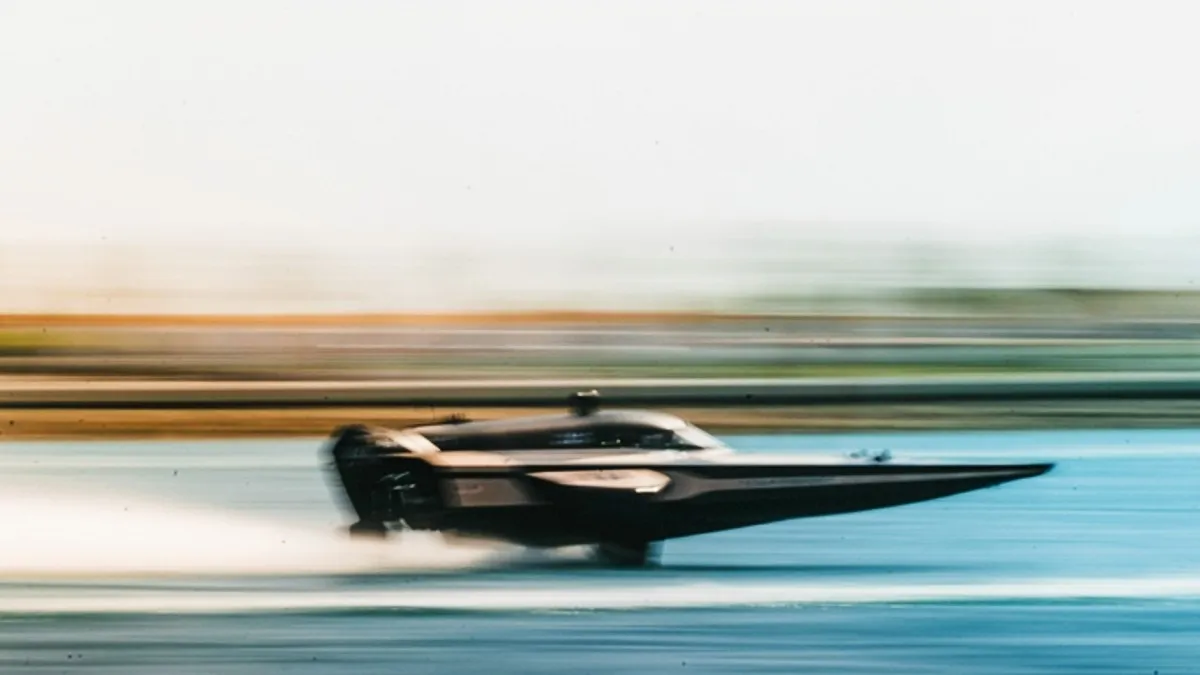
E1 RACING
Then there are the team owners, a mélange of famous people who don’t necessarily bring to mind boats or racing. For that matter, they don’t really have anything to do with one another. Sorry, but it’s going to take more than a few brief hype videos and a recorded Zoom call in which the eight celebrities playfully talk trash before anyone believes the relationship between, say, NFL legend Tom Brady and pop singer Marc Anthony contains any real competitive juice.
There’s also the meeting of mission and money. The series defines itself as “committed to healing our coastal waters and ecosystems . . . through innovative clean technologies and aquatic regeneration.” But Saudi Arabia’s Public Investment Fund (PIF), which controls more than $USD700 billion in cash largely derived from oil production, holds a chunk of equity and occupies the top sponsorship space. (Disclosure: Saudi Arabia’s Research and Media Group has invested in Penske Media Corporation, Robb Report‘s parent company).
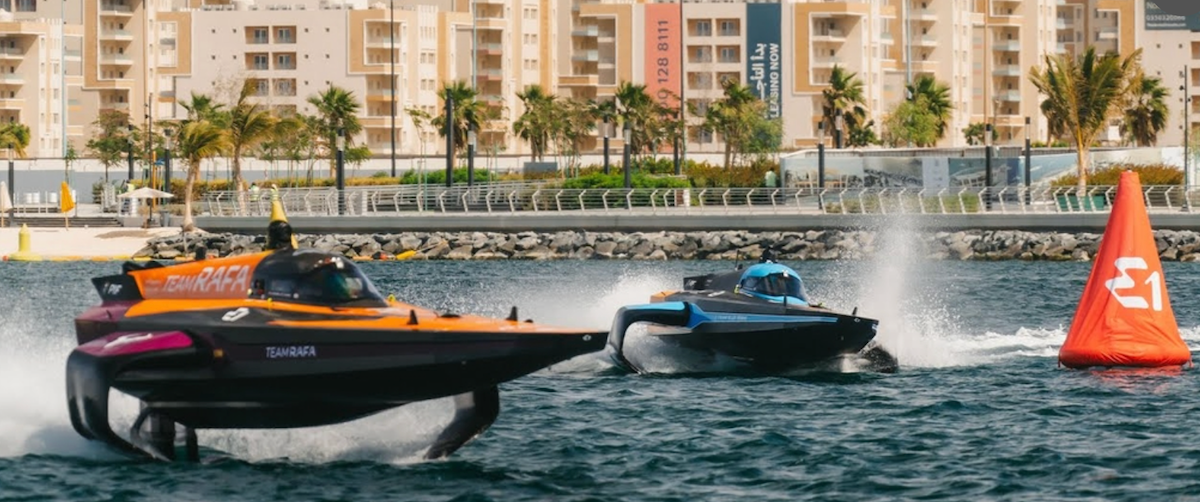
E1 RACING
None of it quite seems to go together, and yet, by many measures that first race, held on an inlet of the Red Sea in Jeddah on Feb. 3, was a success. Expect a ninth team headed by a famous Hollywood actor. The series will host seven more races this year, starting on the waterways of Venice on May 12.
All of which raises the question: Can this actually work?
“Boat racing has never really caught on,” admits Powerboat P1 CEO Azam Rangoonwala, who’s been in offshore racing for more than 20 years and is also a principal on E1’s Team Aoki. “We got involved with E1 because we see an opportunity to finally make that breakthrough happen.”
In 2020, Rodi Basso spent a fair part of the year trying to visualise life after the pandemic. Unlike many others, Basso wasn’t so much longing for the way things had been, as attempting to conjure what new world would emerge.
An aerospace engineer who’d transitioned into motorsports, he’d held jobs at Ferrari, Red Bull and McLaren Applied Technologies, but he’d recently stepped aside and moved to England in pursuit of some then-undetermined new challenge.
When the world shut down, he started running to stay fit and get out of the house, excursions on which he was often joined by Alejandro Agag, who lived nearby. Agag had founded Formula E and Extreme E, each a successful racing series featuring electric vehicles. The pair had met when Basso, through McLaren, developed an improved battery pack that allowed Formula E drivers to complete a race on a single charge.
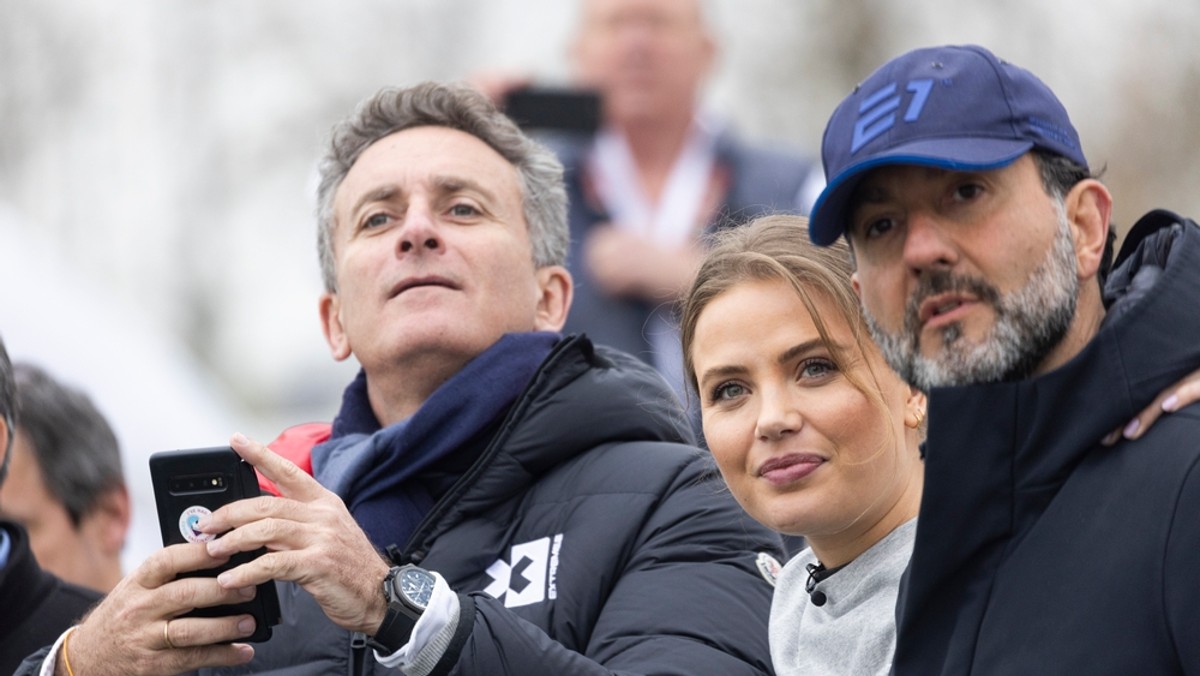
E1 RACING
Basso, an Italian, and Agag, from Spain, debated the next big thing as they traversed the streets of London. Agag had invested in a start-up, Seabird, that was working on a foiling electric boat, and he asked Basso to help with the engineering. That simple request quickly morphed into a new idea—an electric boat racing series.
Perhaps no two individuals were better positioned to make it happen, and that night Basso created a deck summarizing the concept. The next day, he sent it to Agag who immediately signed on. The E1 World Championship Racing series was born amid expectations that it would become the next trending motorsports entity.
Within months they’d secured exclusive rights to stage electric boat races for 25 years through UIM, the international racing organization, and landed the PIF deal. Asked about the irony of Saudi oil money underwriting a series with a mission of “promoting sustainable energy use in marine sports,” and about assertions of greenwashing and sportswashing, Basso looked away from his computer screen.
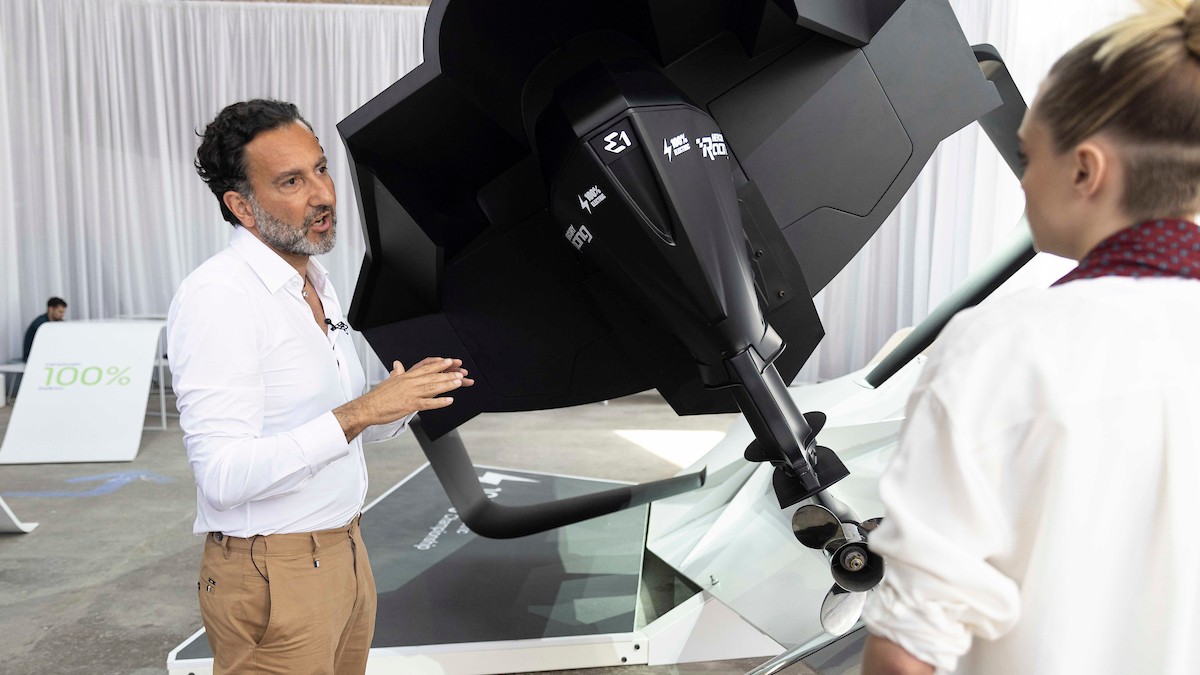
Turning back, he offered a joke and then framed his answer in terms of investing strategies: “I focus on the day-to-day job of the people working at PIF who study markets and industries and place bets on what will bring the highest return. In that sense, it’s a privilege to be noticed and have that initial funding.”
Asked a similar question via email, Brady chooses not to respond, but otherwise replies: “This is a new competition and it has great growth potential, so it was a no-brainer for me to be involved with E1.”
Basso later adds another point: “PIF’s money allowed us to get going. It paid for the development of the boat and the series. Now we have to stand on our own as a functioning business.”
What will that look like?
Location, location, location. Part of the difficulty for boat racing has been the “where.” Contests usually took place offshore or on small—often remote—lakes that offered flat calm, neither of which are particularly spectator friendly.
In recent years, the Sail GP series has solved that problem with a global race circuit featuring smaller, more maneuverable versions of full America’s Cup boats slugging it out on metropolitan waterways, such as San Francisco Bay and Sydney Harbor. In contrast to traditional America’s Cup racing yachts, the smaller SailGP boats also reduce the costs of building, maintaining, outfitting, and shipping them to races around the world.
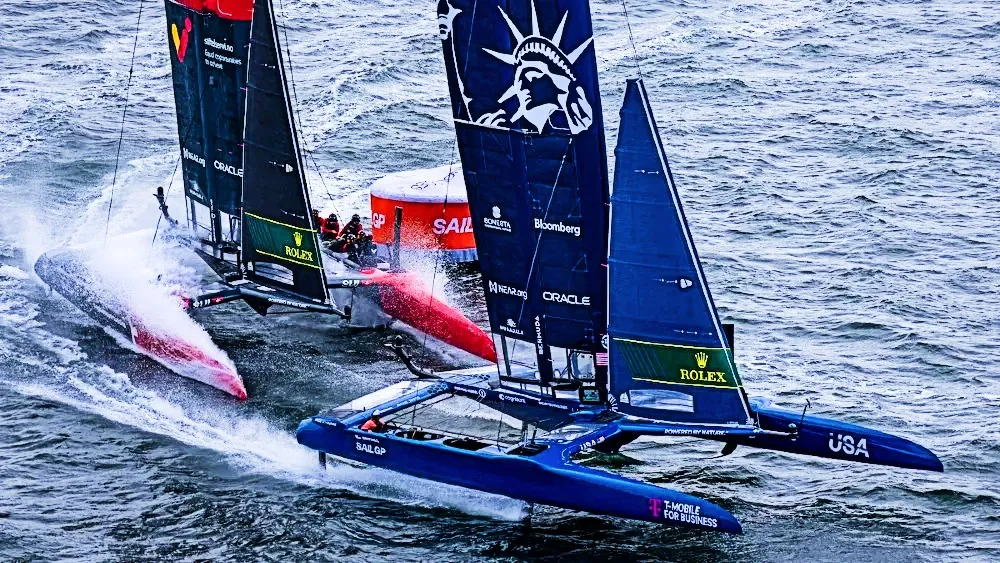
SAILGP
Besides that, the boat looks sleek, part spaceship, part waterbug, as it skitters above the surface. And while 50 knots (92.5 kmph) on a boat is fast—especially an open boat low to the water—it’s not an attention-getting number to the general public. Still, the Racebirds distinguish themselves with a burst of acceleration that’s visible when they compete.
The power comes from a Mercury outboard built specifically for the purpose, with input from Seabird. It has a booster that jacks the output from 100 kilowatts to 150 for 20 seconds per minute, adding to the notable jumps in speed and putting a focus on driver skill and strategy. Each team has two pilots—as they’re called—one male and one female, who alternate turns behind the wheel through a qualifying round, the semi-finals and finals.
“We’re now packaging the propulsion system to sell to other builders,” says Horne. “What drives me is the mission to electrify boats, so we want to partner with other companies out there and help build the infrastructure with fast charging that we’ll need.”
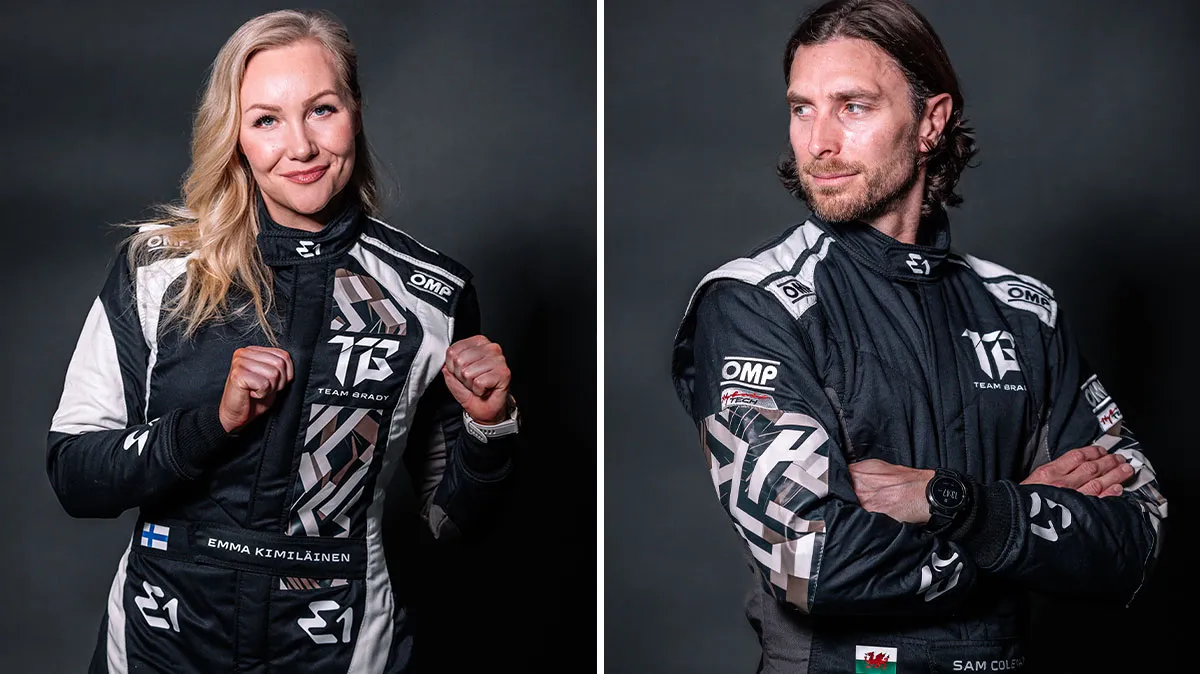
E1 RACING
The series’s green agenda goes beyond pushing the development of electric engines, high-output batteries and hydrofoils, which reduce drag in increase efficiency by lifting the boat’s hull out of the water. E1 intends to employ sustainable practices on-site at events—including the use of local vendors—and install and leave in place high-speed electric charging stations at each locale.
According to its website, organizers will collaborate on coastal restoration projects and education initiatives directed by chief scientist Carlos Duarte, an ocean ecology professor at King Abdullah University of Science and Technology.
“One of the barriers to ownership and sponsorship in powerboat racing has been the sustainability question,” says Rangoonwala of Powerboat P1. “E1 answers that question up front by building it into the mission.”
Whatever seeming contradictions arise from the use of PIF funds, the series has already had a real-world impact. Mercury Marine has incorporated much of the technology it developed for the Racebird engines into its Avator electric outboards. More than 12,000 Avators have been built in the last year. “Racebird was a good place for us to start,” David Foulkes, CEO of Brunswick Corp., Mercury’s parent, tells Robb Report. “It was a way to gain experience in a controlled environment, where the boats are centrally maintained.”
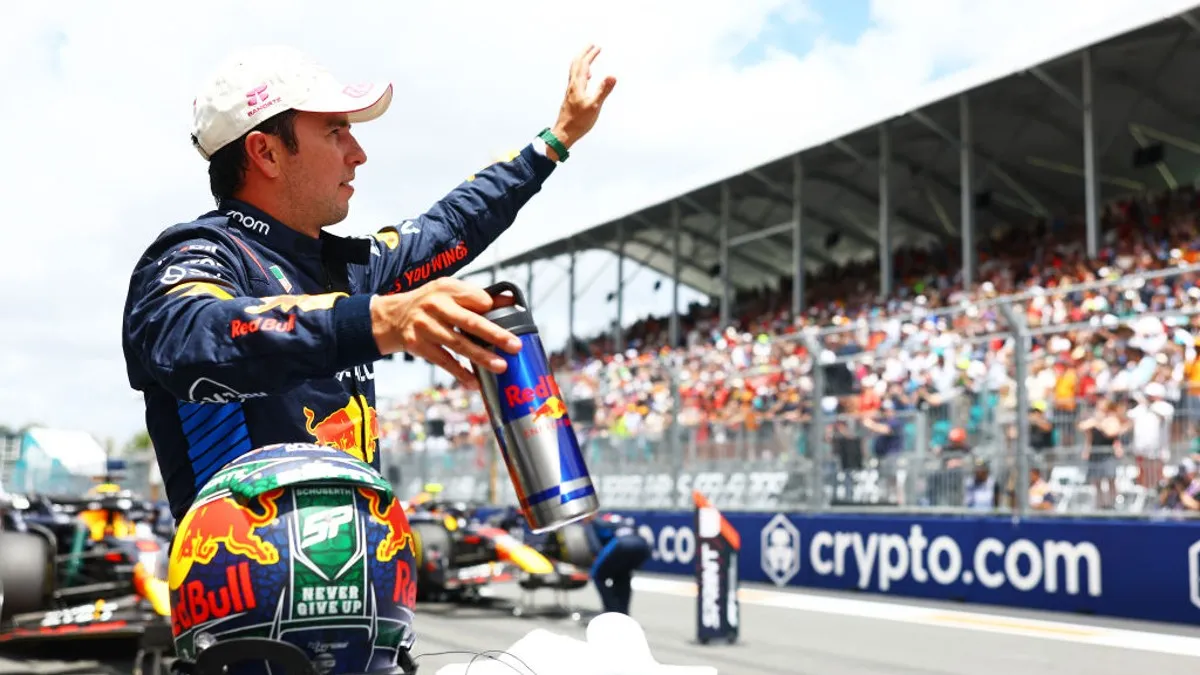
GETTY IMAGES
Basso calls Agag a “marketing genius” for the way he tapped into existing audiences for Formula E and Extreme E by luring well-known names from Formula 1 and extreme racing—and their social media followings—into the fold. It’s a proven approach, but one that would not work for E1. “Unfortunately, in powerboat racing, there are no star drivers or famous owners,” Basso says.
The alternative involved finding celebrities from other walks of life to invest in teams. “First, we approached Sergio Perez and evidently our presentation was done right because he joined, then Rafa Nadal signed up,” Basso says. “The rest came as a consequence of a sort of missing-out syndrome, which worked out nicely for us.”
The sell might have been easy, but the selections reflect the sort of calculated demographic cross-section that would make a pollster drool. Besides Brady, the white American hero of seven Super Bowls, Smith, the Black Hollywood superstar, Nadal, the internationally known Spanish tennis star, Anthony, the Grammy-winning musician with Latino roots, and Perez, a Formula 1 driver from Mexico, there’s Didier Drogba, a Black European soccer icon from Ivory Coast; Steve Aoki, a world-renown DJ of Japanese descent; Virat Kohli, a cricket star from India; and Marcelo Claure, a Bolivian tech entrepreneur.
All appear engaged at the outset, sitting for video interviews and promoting the series on social media. Four showed up for the opening race and Brady plans to be in Venice. “I’ve been involved in a few things since retiring but this racing series has been incredible,” Brady tells Robb Report. “I love competition and racing. Seeing the vision of the sport come to life has been very fun and fulfilling.”
Basso says he and Agag intentionally created a “business mechanism that would give owners skin in the game and keep them engaged.” The owners put up €2 million (about $2.15 million) to license a team. E1 owns the series and the boats and handles all the logistics, including transportation, for which they charge teams another €1 million. The buy-in, Basso says, will go up for Year 2, since three of the original eight license holders have already resold them at five times the initial investment.
To ensure those values keep rising, E1 plans to cap the series at 12 or 15 teams competing in 15 races, hopefully by Year 3, with five events in Asia, five in the Mid-East/Europe and five in the West, where potential venues include Miami, Mexico and Brazil.
To help control costs, the boats must run as they come out of the box, and though teams can hire as many engineers as they want back at headquarters, they can’t have more than seven crew members, including drivers, on the dock during races.
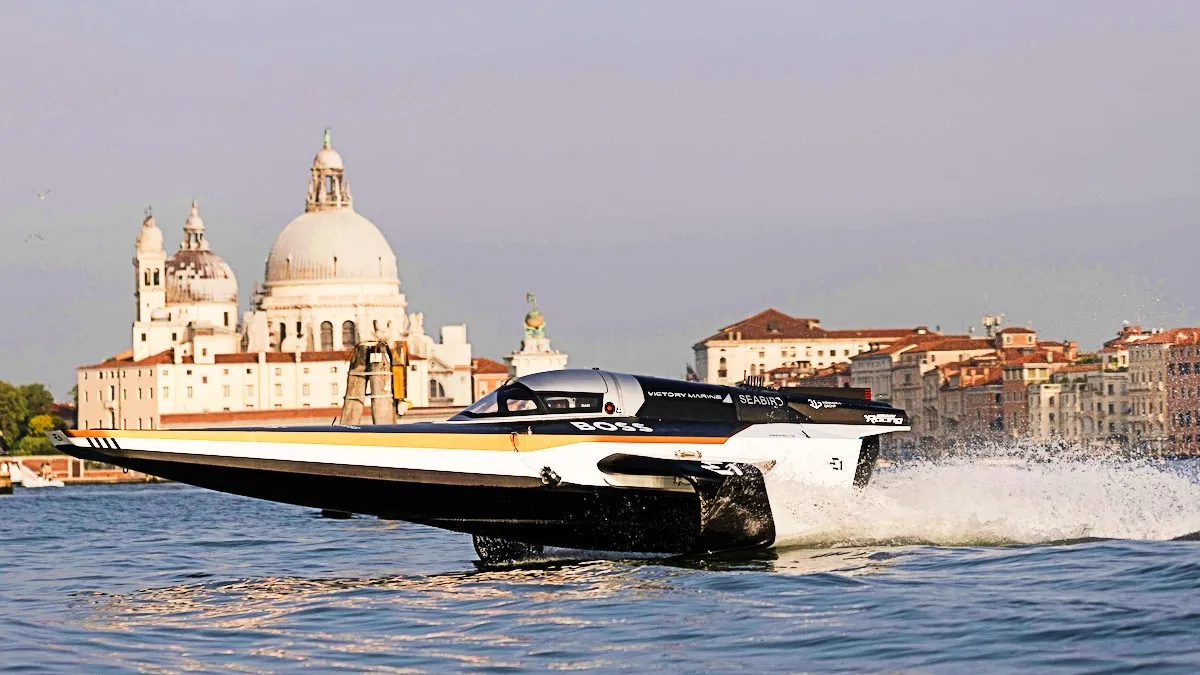
MERCURY MARINE
“They made some really smart decisions to limit costs at the outset,” says Ben King, one of of Team Brady’s co-principals. “The plan is to start modifying the boats in Year 3, which would mean greater outlays for teams, but by then, hopefully, the circuit will be well established.”
Teams can bring on sponsors outside those attached to the wider series, including everything from patches on pilot uniforms to on-the-boat decals to partnerships that showcase technology. Visibility shouldn’t be a problem. E1 has both linear and streaming deals with 120 broadcasters that range from Asia through India, MENA, Europe, and the Americas, where CBS owns the US television rights.
On the course at Jeddah, the four finalists line up for the rolling start of the final race, among them Team Brady. As the boats pass the marker buoy signaling the beginning of the first-ever E1 championship, three surge ahead while the Brady boat founders and wobbles forward, dropping to last.
In the previous heat, Brady’s Emma Kimiläinen finished third, meaning teammate Sam Coleman has to not just win the heat but make up the time deficit to claim the title. As the boats approach the first turn, Coleman mashes the booster and jolts forward, closing the gap and creating a three-boat bottleneck around the first buoy.
The scene turns chaotic as the boats speed through the curve within yards of each other and geysers of whitewater and churning wakes fill the space around them. Emerging into the straight, they jockey for the lead. “Racing these boats is super intense—insane,” says Coleman. “The trick is constantly managing the foil height. Too much power and the boat will drop and you’ll lose speed. The working window is so small, and while you don’t have engine noise, there’s feedback through cavitation and vibration that you have to learn to feel.”
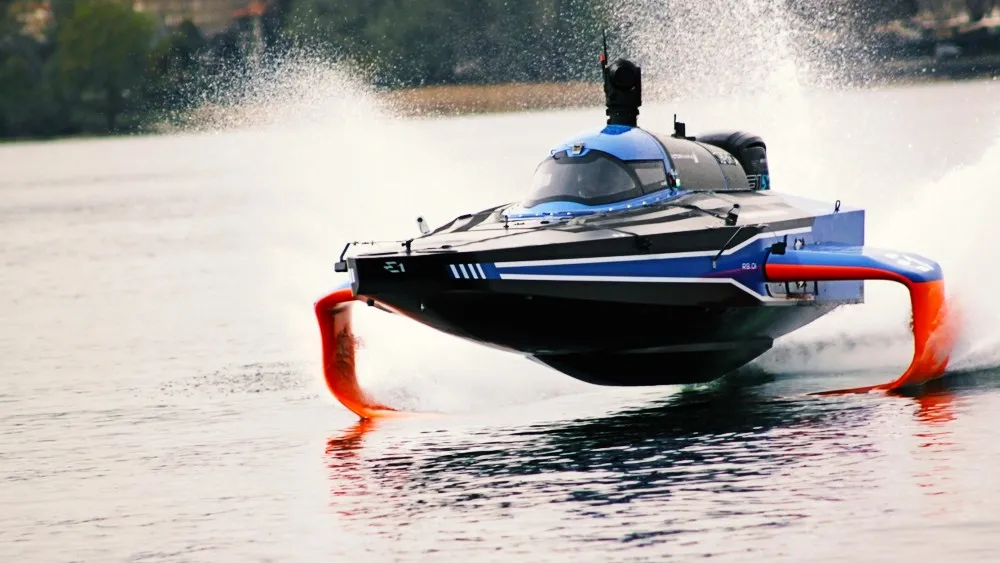
E1 RACING
Most of the drivers have come from other disciplines, motorcycles, cars, even Jet Skis and WaveRunners. Coleman started in motocross, then teamed with his sister to become a world champion and two-time U.K. champ in P1 Powerboat. Whether it’s that experience or his feel for his craft, Coleman’s boat levels and rises high on its foils as it shoots to the front.
Through the next turns, Coleman’s lead builds, creating another bit of intrigue. The course layout consists of a small oval inside a larger one, something like a paperclip. Over a five-lap race, each driver must circumnavigate the inner oval four times and the outer once. As Coleman continues to pull away, the question of when to take the long lap rises.
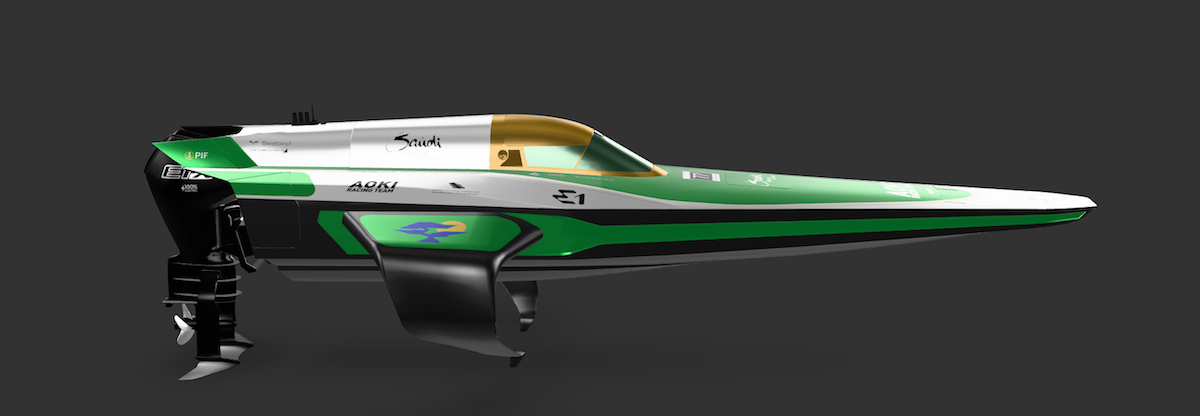
E1 RACING
And while that gives the announcers something to talk about, it also highlights a shortcoming. The moments of close-quarters racing, the nuance of working the trim and booster and the strategic quirk of the long lap all make for good, engaging viewing. At the same time, the difficulty of keeping the boats running clean on the foils and the long lap spread the field, sapping most of the drama from the action. Those instances of intense, close-quarters racing are few and far between.
Ultimately, that’s what success will come down to: Will people understand the level of skill and strategy on display and will the competition hold up? A sustainability mission and a few 30-second hype videos from Tom Brady (whose team pulled through in Jeddah as the winner) provide a sense of purpose and attract eyeballs, but for people to continually show up and tune in—to pay up—the races themselves have to deliver.
Formula E and Extreme have made it work. Will E1? Ladies and gentlemen, start your very-quiet engines.
You may also like.
10 Fascinating Facts You Never Knew About Porsche
The automaker is a sports car standard-bearer with a long, impressive history in racing.
Porsche has long stood at the pinnacle of automotive achievement. The automaker has won the 24 Hours of Le Mans 19 times—more than any other competitor—and has successfully competed in everything from rally racing to Formula 1. The history of Porsche vehicle production is equally impressive, as the company rose from the rubble of World War II to become one of the most widely recognised luxury and performance brands in the world today. Let’s dive into the history of Porsche with 10 facts you might not have known about the German brand.
Porsche Was Founded by an Ex-Mercedes Engineer
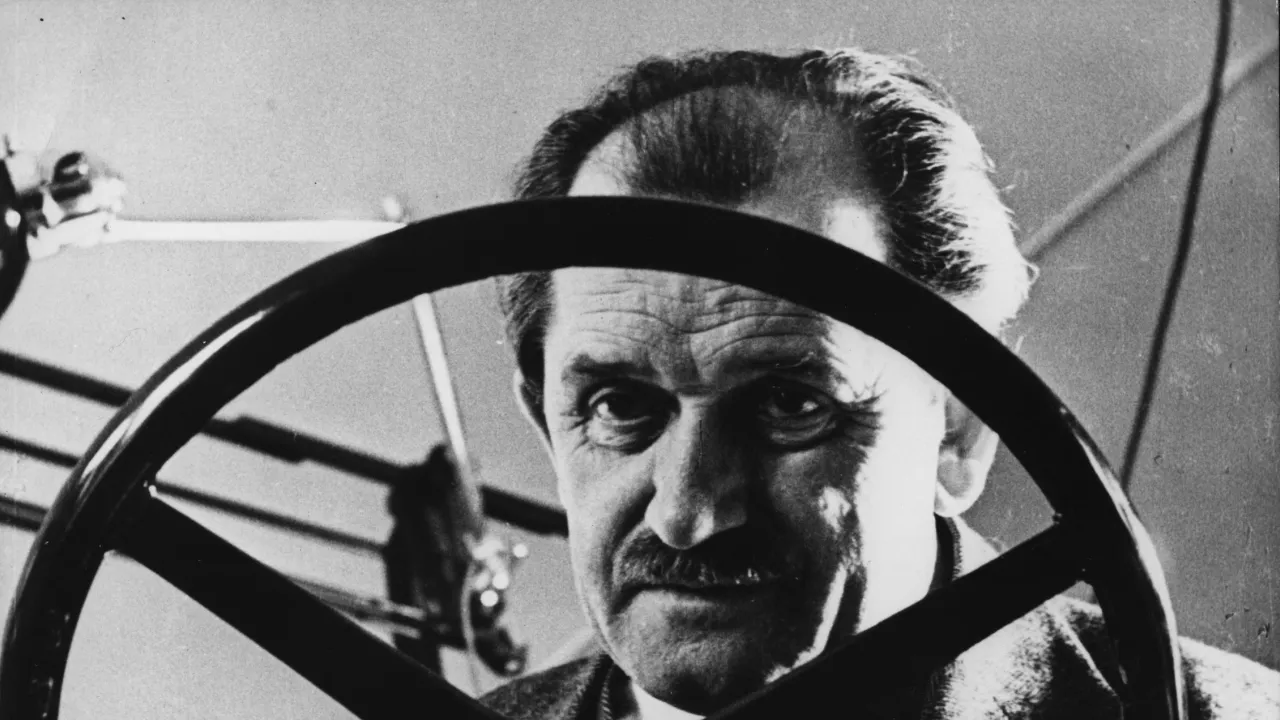
Ferdinand Porsche was born in 1875 in what is now the Czech Republic. Despite the fact that he had little formal education, from an early age Porsche was recognised as a brilliant engineer. In 1901, Porsche built the world’s first gasoline-electric hybrid vehicle, a motorised carriage that used a Daimler internal-combustion engine to generate power for electric motors in the wheels. Soon, Porsche was hired as technical director of Stuttgart-based Daimler, where he worked on Mercedes race cars including the hugely successful Mercedes-Benz SSK.
Engineering Consultant
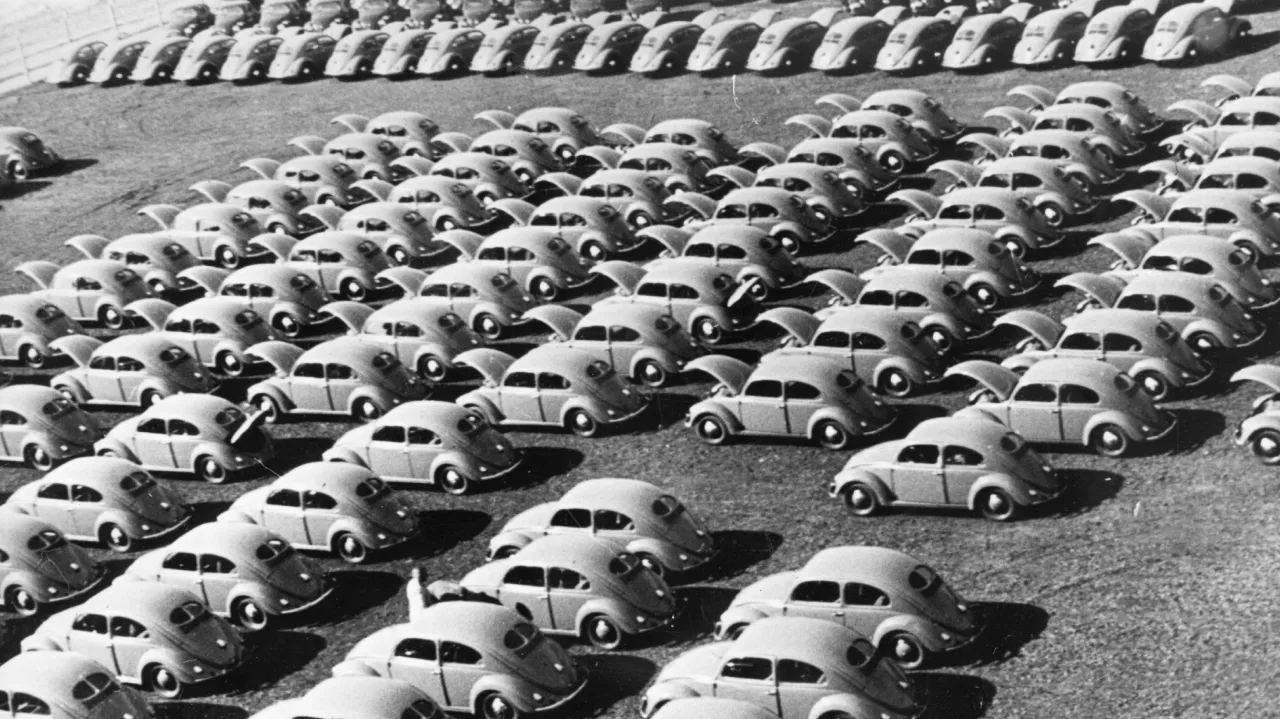
In 1931, Ferdinand Porsche launched the company that still bears his name today. It wasn’t a car-building operation: Dr. Ing h.c. F. Porsche GmbH was a consulting agency, supplying design and engineering expertise to various automakers. Soon after launching his company, Ferdinand Porsche received an assignment directly from German Chancellor Adolf Hitler: A project to build a simple, durable, affordable vehicle that could be purchased by everyday Germans, codenamed Volkswagen, or “people’s car.”
Porsche and World War II
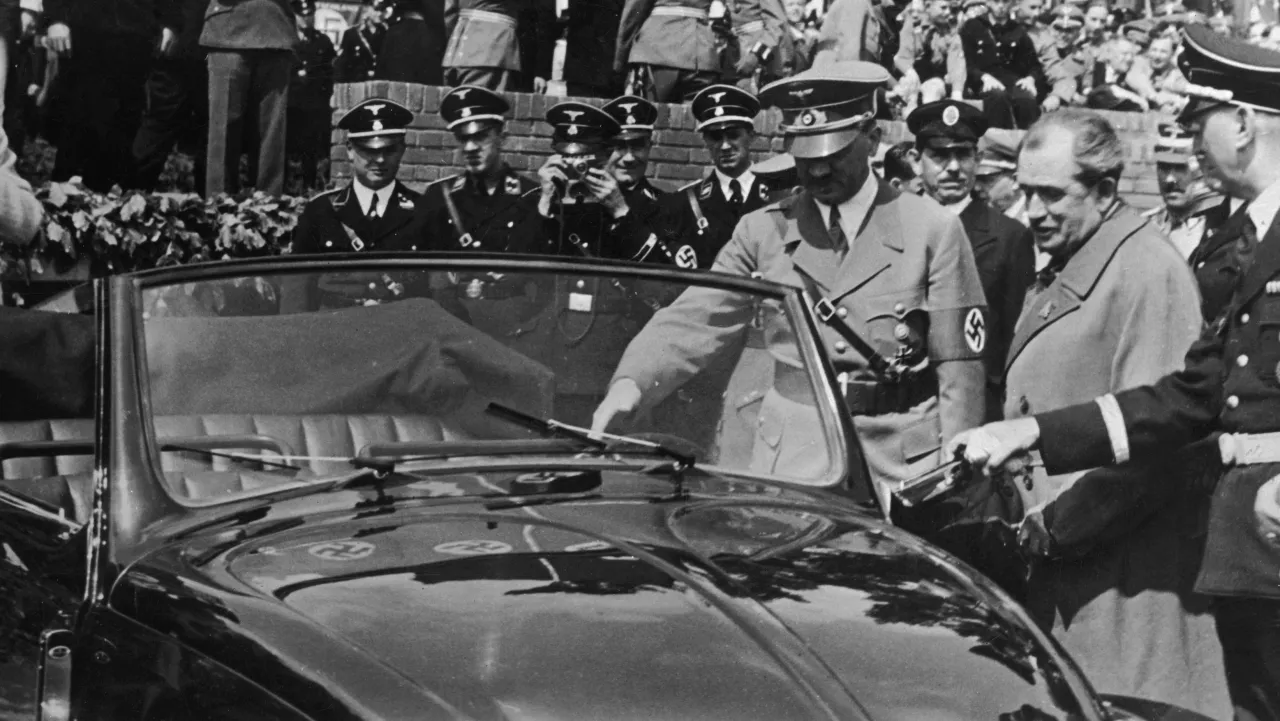
Ferdinand Porsche unveiled the first Volkswagen prototype in 1935; in 1939, the Volkswagen factory began production, with Ferdinand Porsche appointed as an executive. As part of his work with the government of Nazi Germany, Porsche renounced his Czechoslovak citizenship, joined the Nazi Party, and became a member of the SS paramilitary group. Ferdinand Porsche contributed to the design and engineering of Nazi tanks and troop transport vehicles, and after World War II ended, he was arrested for war crimes including the use of forced labor, serving 20 months in prison in France.
Porsche Begins Building Its Own Cars
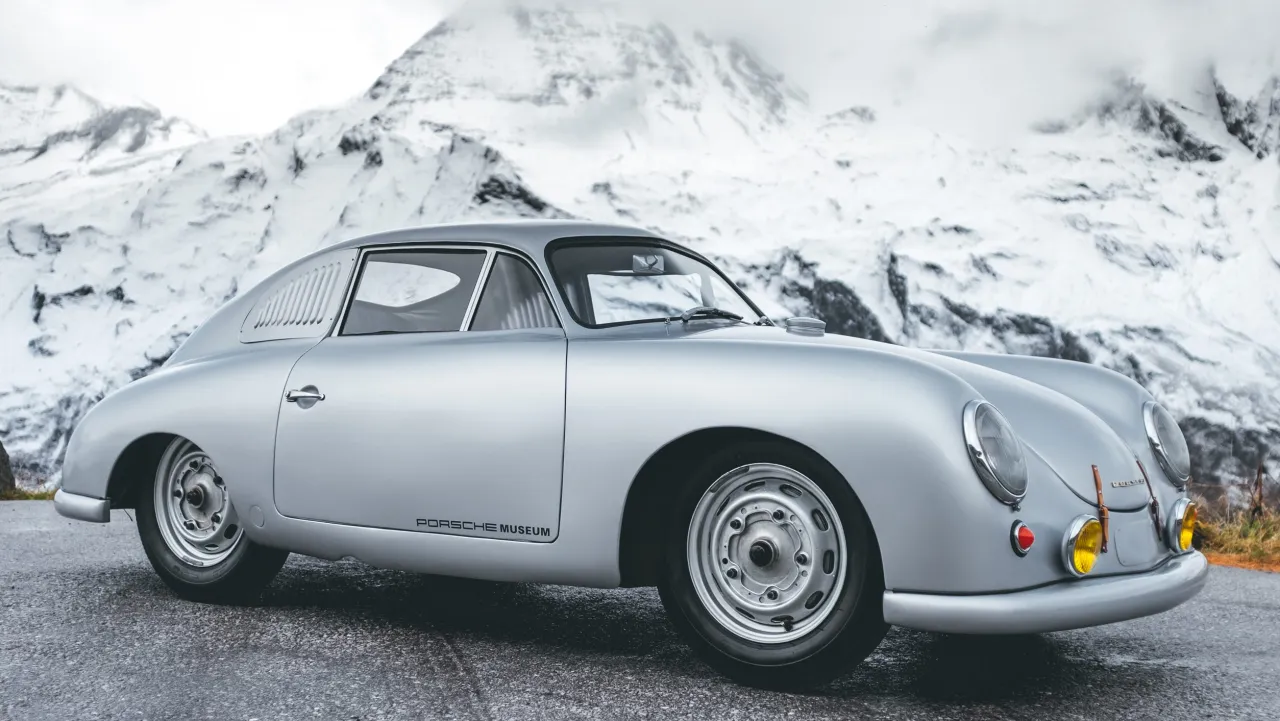
Following the end of World War II, Ferdinand Porsche’s son, Ferry, sought to build a sports car according to his father’s vision. In 1947, the first examples of the Porsche 356 were assembled in a small sawmill in Gmünd, Austria, where the Porsche family had moved operations to avoid Allied bombing. The 356 bore some resemblance to the Volkswagen, and like that vehicle, it used a rear-mounted four-cylinder engine along with some other VW components.
The 901, Or Rather, The 911
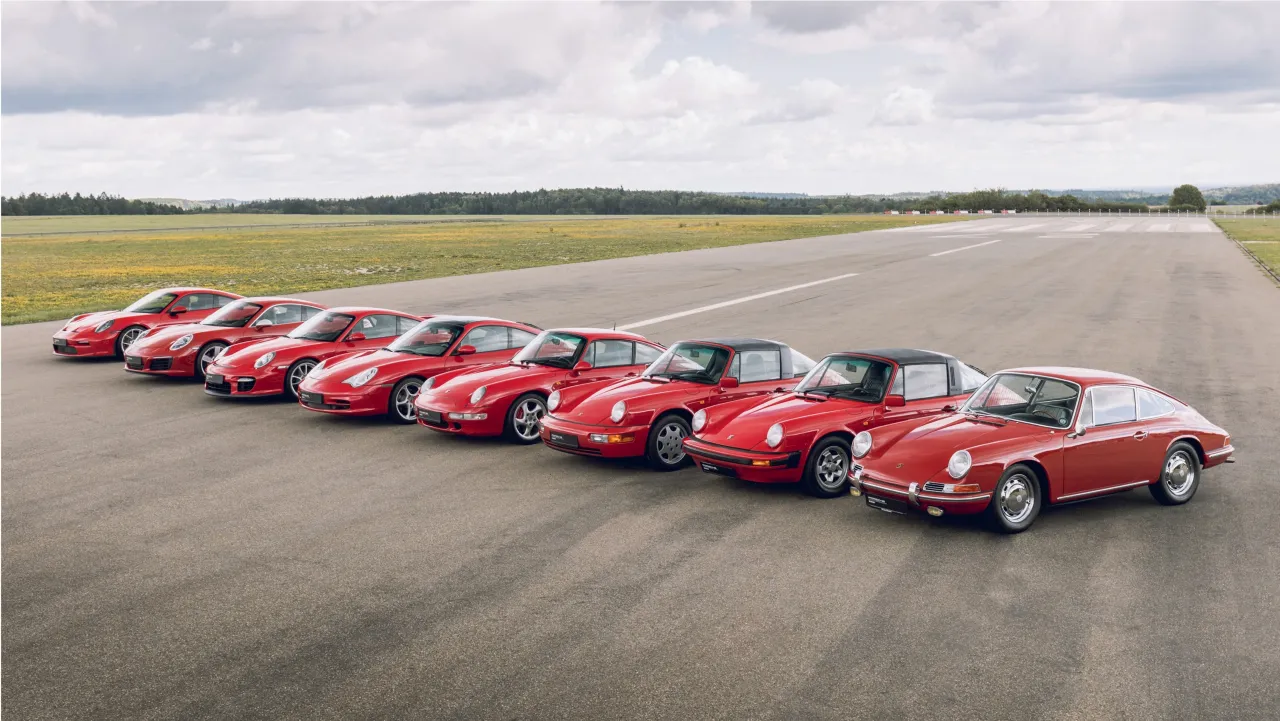
Porsche built several versions of the 356 until 1965, but by the end, the vehicle was badly out-of-date. Ferdinand Alexander Porsche, grandson of the company’s founder, designed a new rear-engine sports car, this time with an air-cooled six-cylinder engine. The company intended to call this model 901, which was the internal code-name for the project, but Peugeot owned the trademark on all three-digit model numbers with a zero in the middle, so the name was swiftly changed to 911.
The 917 Launches a Racing Dynasty
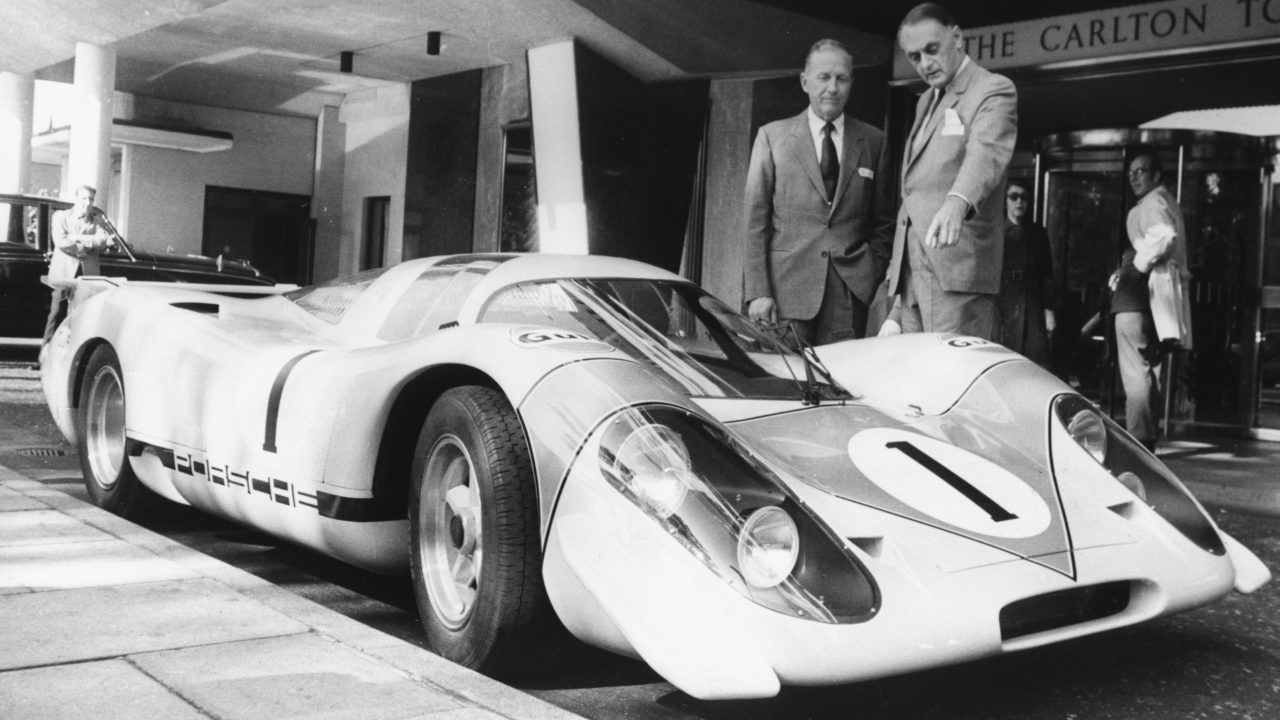
Porsche found racing success with the 356, 911, and various competition-only prototypes, but the automaker’s rise to motorsport dominance began with the 917. First shown publicly in 1969, the 917 was the brainchild of Ferdinand Piëch, a grandson of Ferdinand Porsche who would later go on to lead the entire Volkswagen Group. The race car used an air-cooled mid-mounted flat-12 engine, and it was so compact, the driver’s feet sat ahead of the front axle. After some early developmental troubles, the 917 became a dominant endurance racer, winning the 24 Hours of Daytona, the Monza 1,000km, the Spa-Francorchamps 1000 km, and the 24 Hours of Le Mans back-to-back in 1970 and 1971. The 917 was a monster, reliably cresting 230 mph at Le Mans in an era when the typical racing prototype couldn’t break 200, and it launched Porsche on a path to becoming the winningest manufacturer in Le Mans history.
911’s Near Death and Resurrection
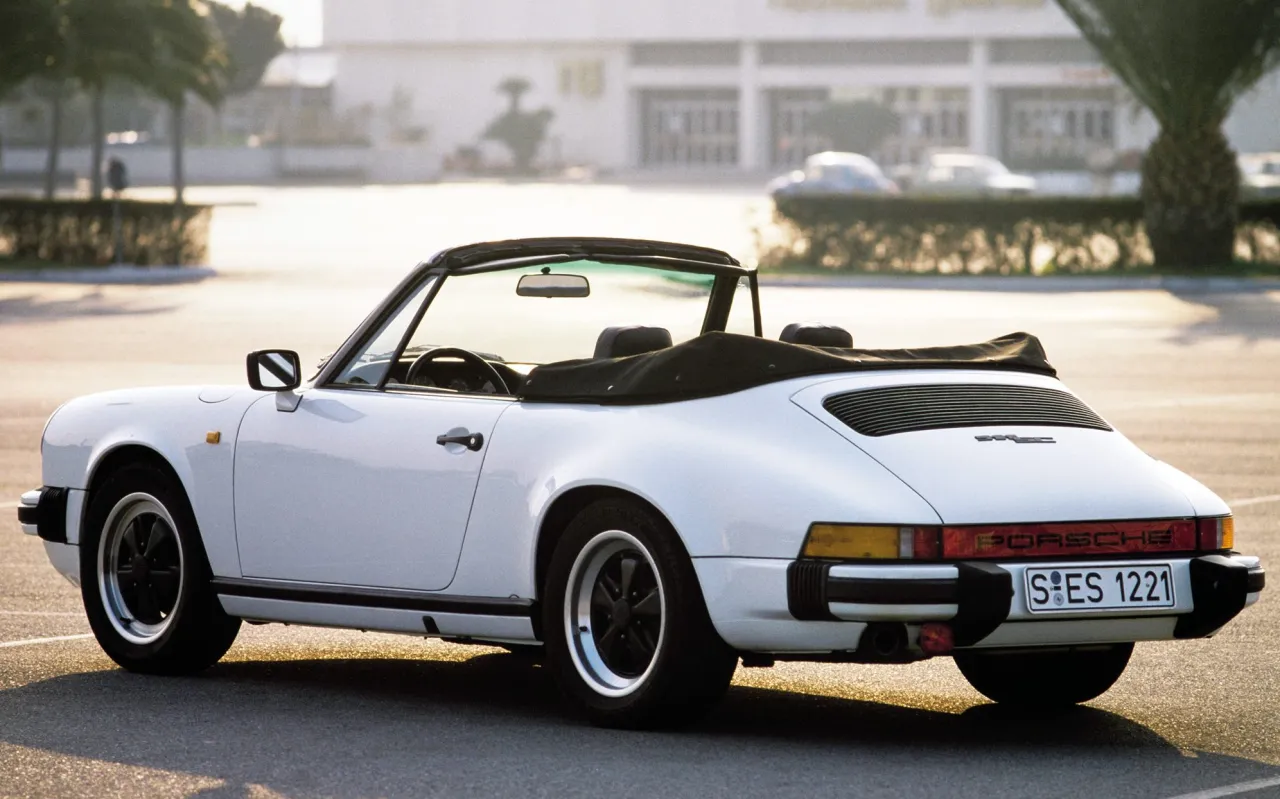
The late 1970s were difficult for sports car companies, and in 1980 Porsche had its first year of financial losses. The 911 had gone without significant updates and was slated for cancellation, with the front-engine, V8-powered 928 intended to replace it. Newly-appointed CEO Peter Schutz, who was born in Germany but was raised in the U.S., realised that the impending death of the 911—considered the quintessential Porsche sports car—was contributing to low morale at Porsche. Schutz walked into the office of chief Porsche engineer Helmuth Bott, where a chart showed continued production of the 928 and 944, and the end of 911 production in 1981. In a scene that has become legend, Schultz took a marker from Bott’s desk, extending the 911’s line off the chart, onto the office wall, and out the door—signifying that the 911 would never be canceled. “Do we understand each other?” Schultz asked, and Bott nodded in the affirmative.
The World-Beating 959
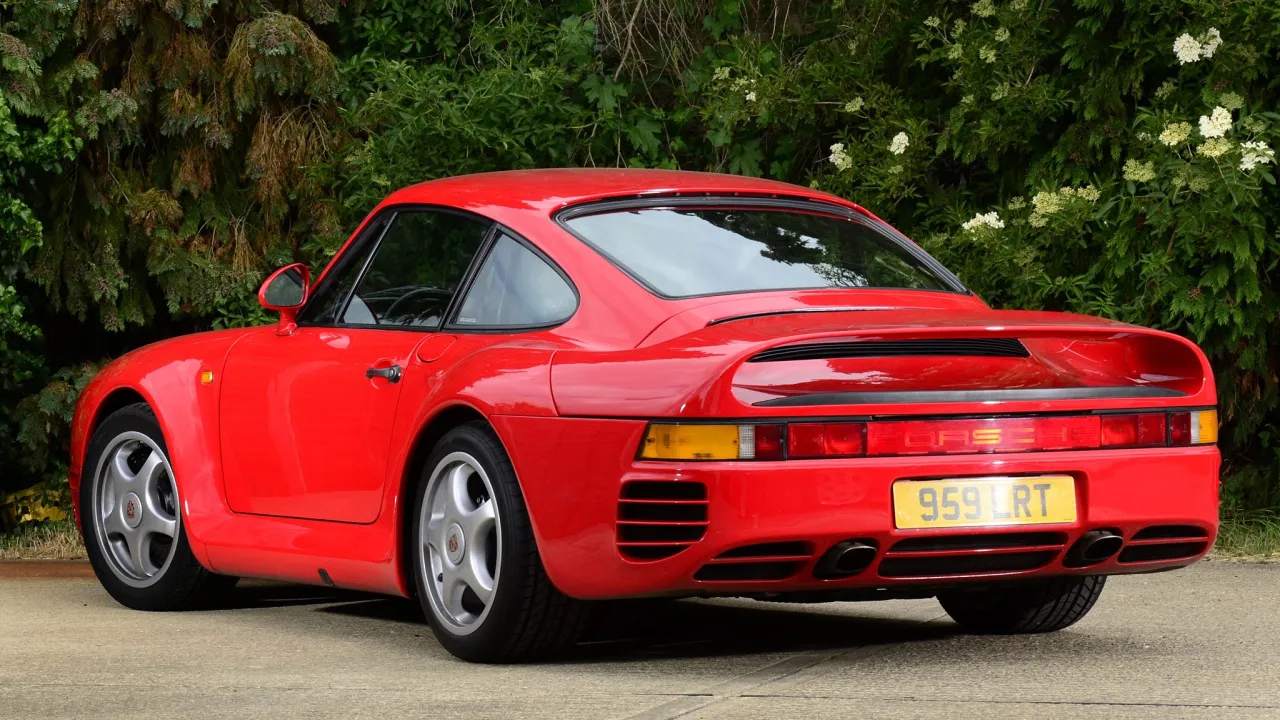
In 1986, Porsche unveiled a supercar that shared the general shape of the 911, but was shockingly advanced in nearly every way: The 959. Developed to compete in Group B rally racing, the street-legal 959 had a twin-turbo engine making 326 kilowatts, Kevlar composite bodywork, wide-body fenders, and all-wheel drive. It soon became the fastest production car in the world, sprinting from zero to 96 in 3.7 seconds and reaching a 317 kmph top speed.
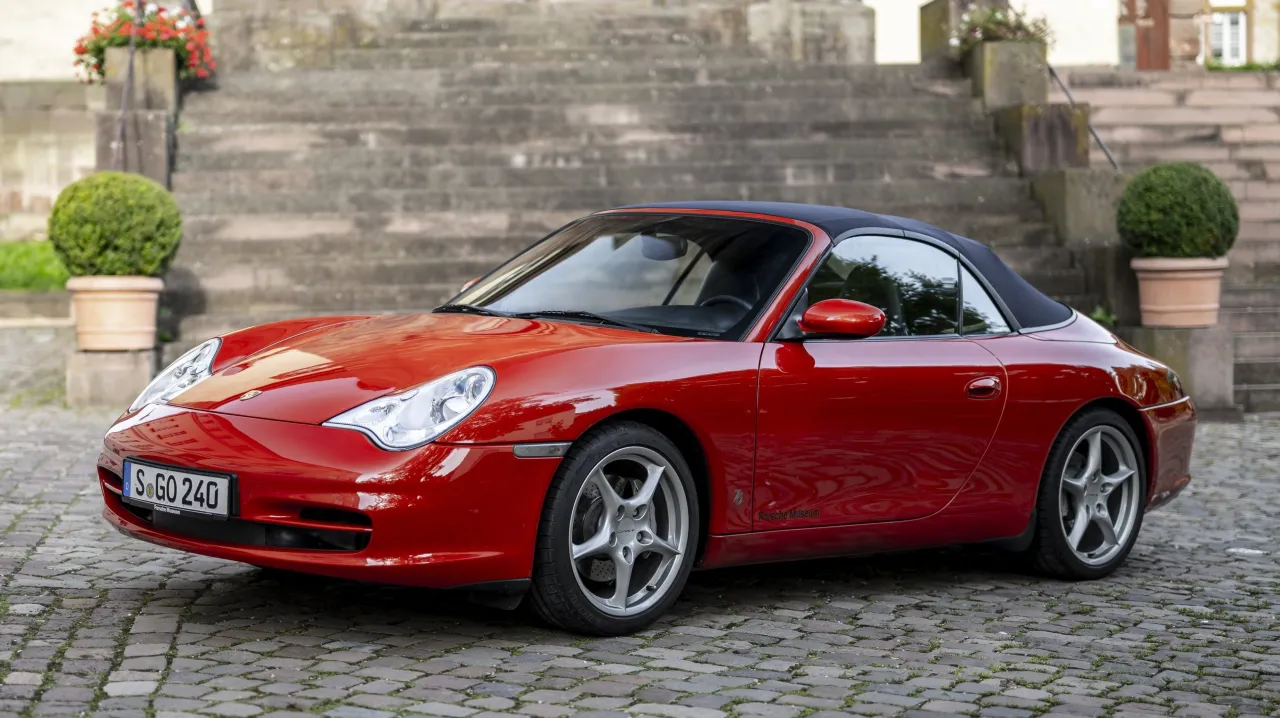
Amazingly, from 1963 to 1997, Porsche never undertook a full redesign of the 911. In 1998, a brand-new sports car emerged. Internally known as Type 996, the all-new 911 had a completely redesigned body shell and an all-new flat-six engine that, for the first time, was cooled by water rather than air. Early 996s shared their front bodywork and some interior panels with the more affordable mid-engine Boxster, causing some controversy among Porsche fans, but today the 996 is considered the model that saved the Porsche 911.
SUVs, Sedans, and the Future
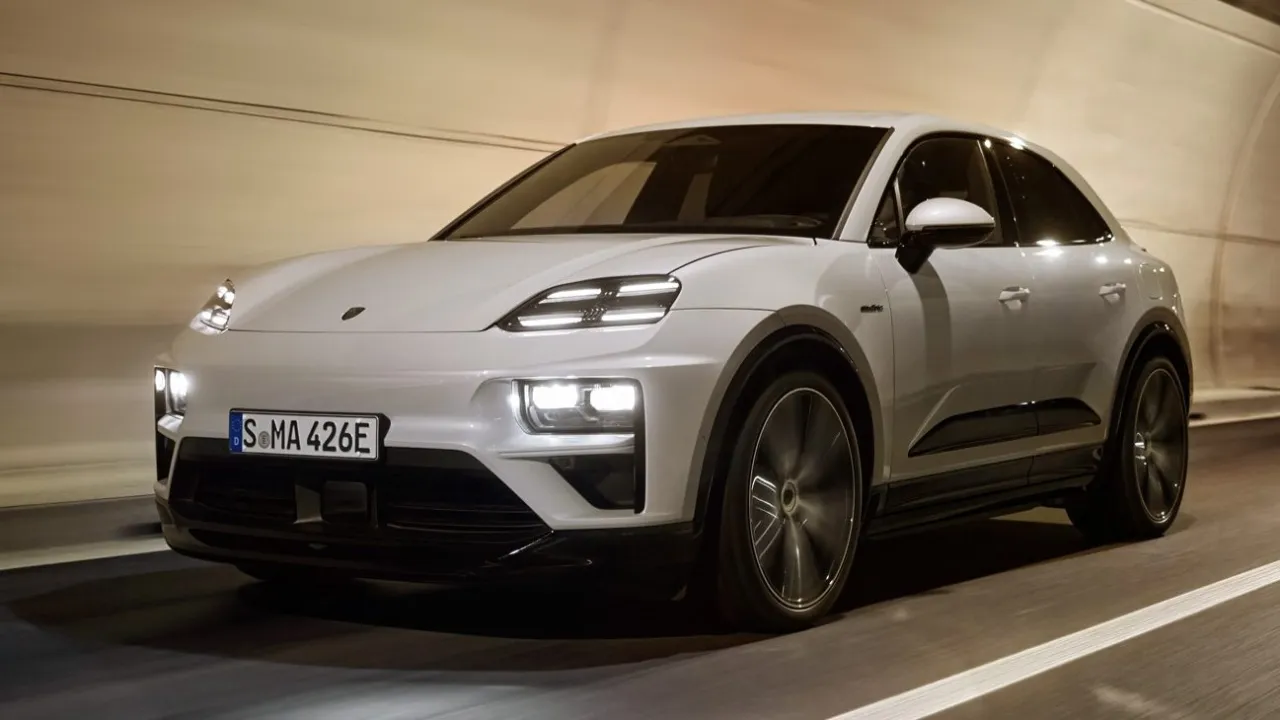
In 2002, Porsche introduced the Cayenne, the automaker’s first sport-utility vehicle. A few years later, in 2009, the four-door Panamera luxury sedan was launched. Today, Porsche’s best-selling model is the Macan, a small SUV, with the Cayenne not far behind. The automaker also sells an all-electric sport sedan, the Taycan, and is moving toward the future with plans for hybrid and all-electric sports cars.
You may also like.
Sitting on the Dock of Balmain
Is The Dry Dock Sydney’s Hottest New Pub Renovation?
At its peak, in the late 1890s, Balmain had 55 pubs. They were noisy watering holes that serviced thirsty hordes after a day’s labour at the suburb’s harbourside coal mine and shipyards. Today, Balmain is dotted with charming workers’ cottages set behind picket fences and stolid corner pubs, which have been converted into restaurants and homes.
One such establishment, the Dry Dock on Cameron Street, has undergone a multi-million dollar renovation. As an original public house built in 1857, it remains fixed in a local backstreet and offers a porthole to the suburb’s blue-collar roots.
Locals can still bring their dogs into the front bar, or retreat to the lounge to sit next to a crackling log fire.
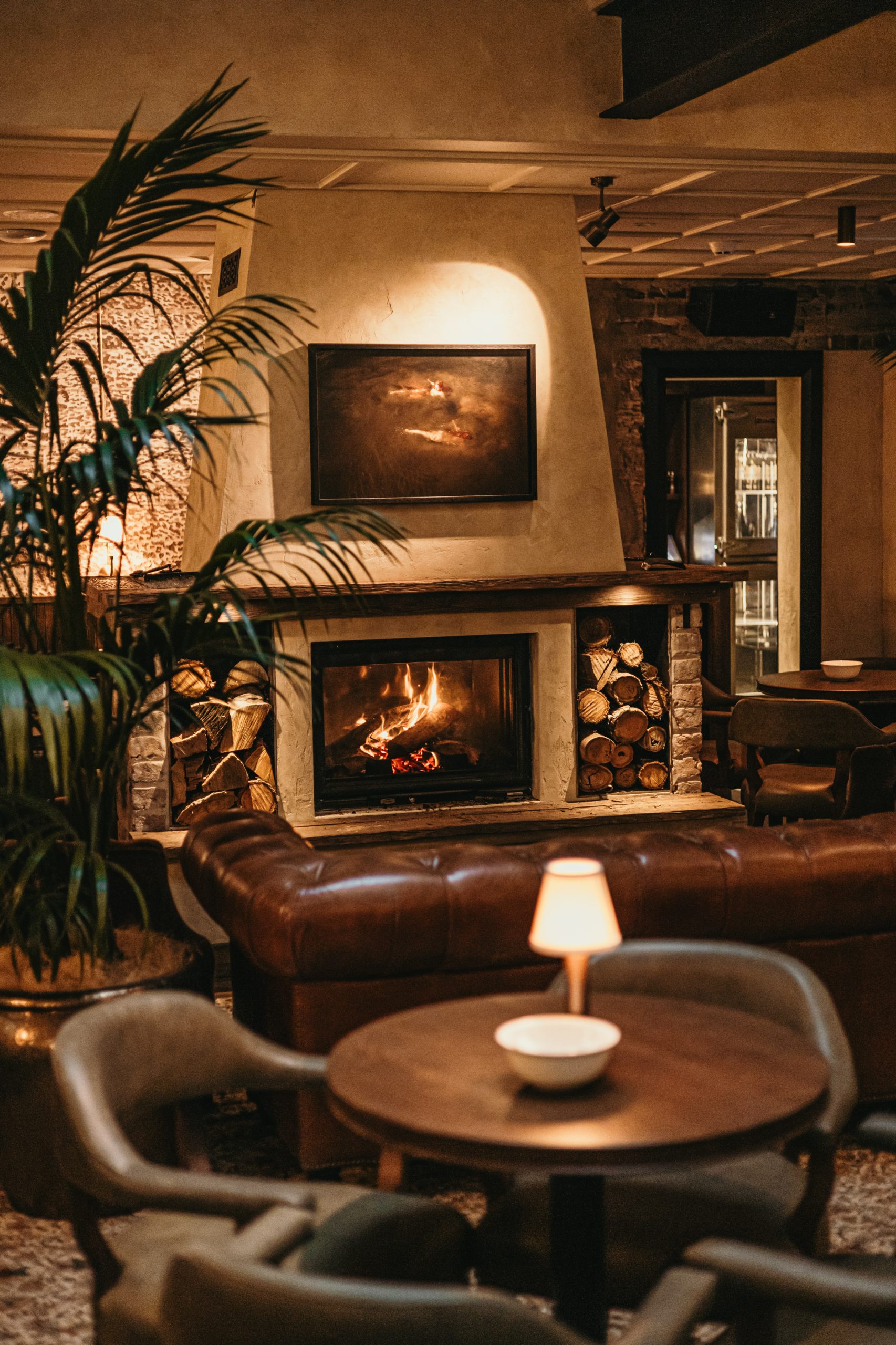
The renovation carried out by Studio Isgro and H&E Architects combines rustic touches—like the acid-etched sandstone exterior, exposed brickwork and beams —with elegant light fittings, an incredible sound system and tasteful art. “It has a transportive, escapist quality, where you could be anywhere, or right at home,” says interior designer Bianca Isgro of Studio Isgro, who spent two years on the overhaul. Her team designed a modern gastropub on the site after gutting and stripping the building, which had been neglected for years.
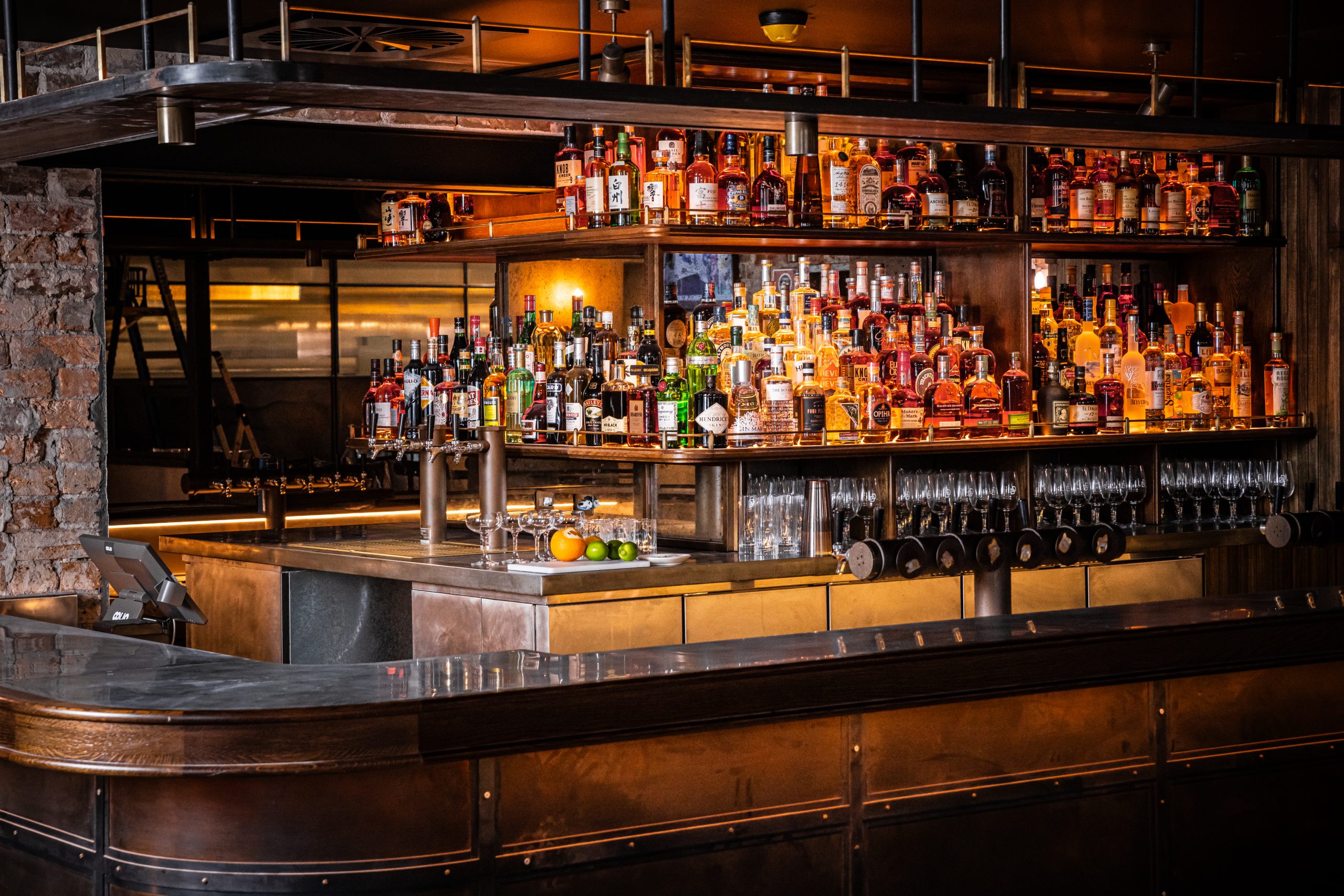
Founder and managing director James Ingram (ex-Solotel and Merivale) has assembled a warm, friendly service team that matches the pub’s character. He says his team has fought hard to preserve the pub’s long-standing connection to residents and to get the mix of old and new right.
“Balmain is home to so many devoted residents who are rightly proud of the suburb’s working-class roots,” says Ingram over a frothy beer in the warm-toned front bar.
“The Dry Dock has been designed to have that timeless feel that stands the test of time.”
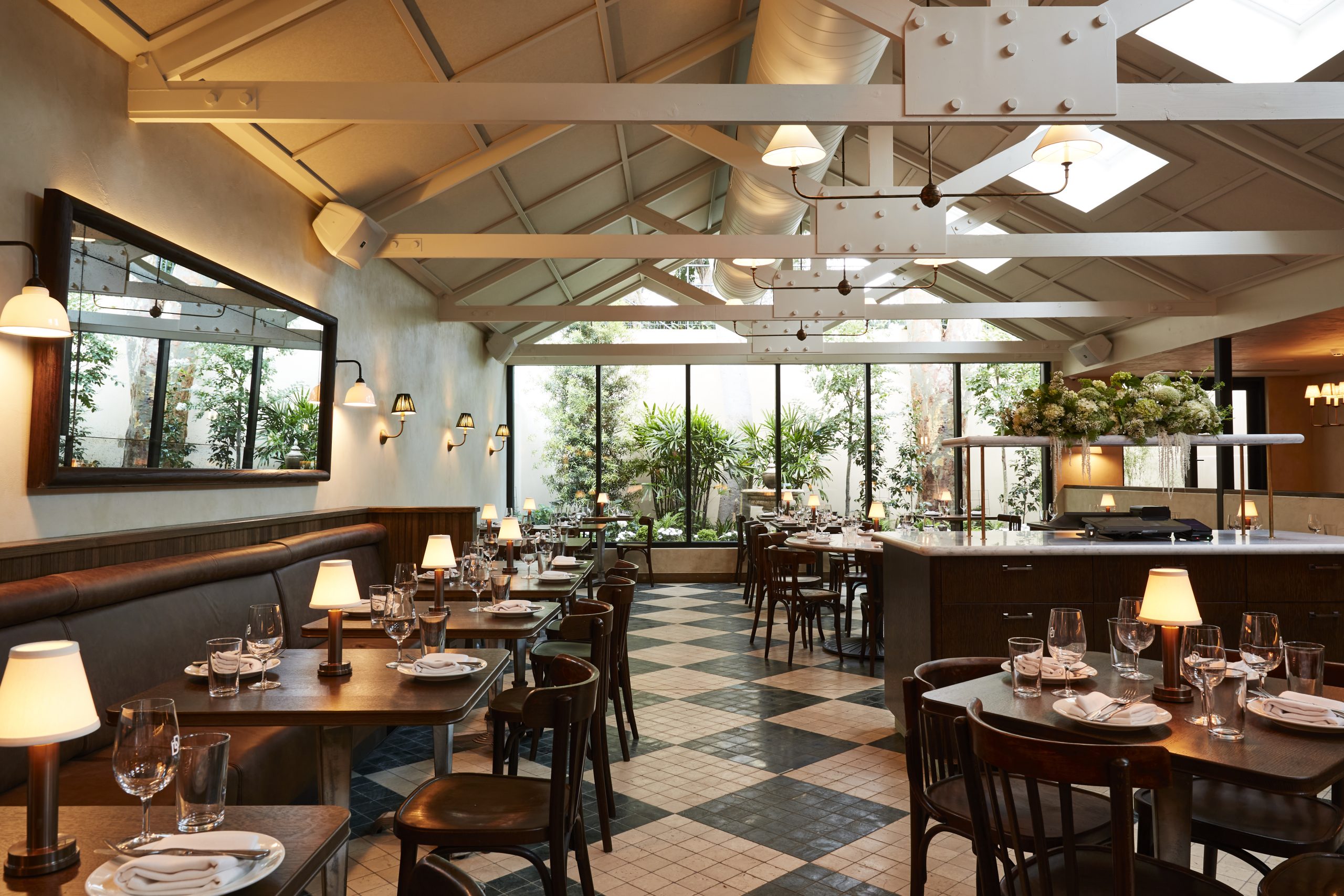
The large open kitchen features an oyster bar and serves French-style fare, delicious sides, and hot desserts. The wine list is on point, with something in every price range and a friendly sommelier doing the rounds.
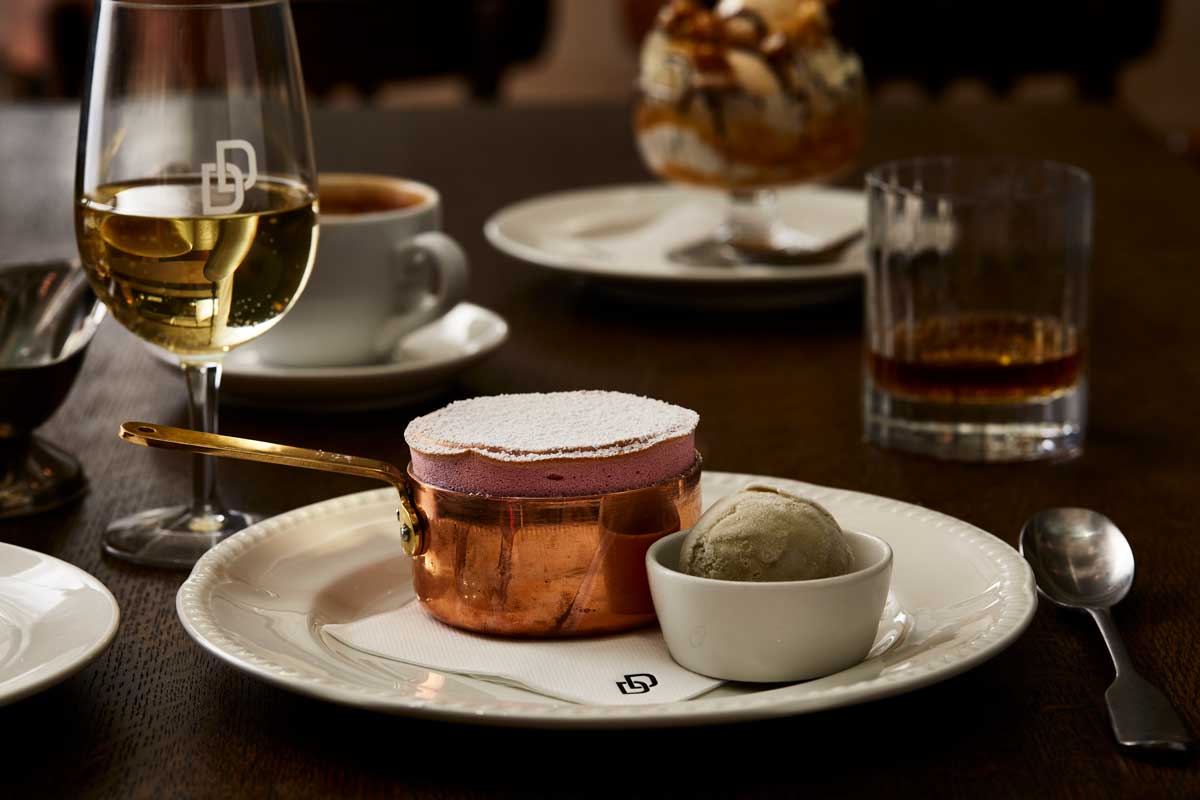
The kitchen is led by seasoned chef Ben Sitton, who previously rattled the pans at institutions including Felix, Uccello and Rockpool Bar & Grill. His kitchen faces a large dining room with unclothed tables, bentwood chairs, tumbled marble floors and exposed trusses that give it a contemporary feel. 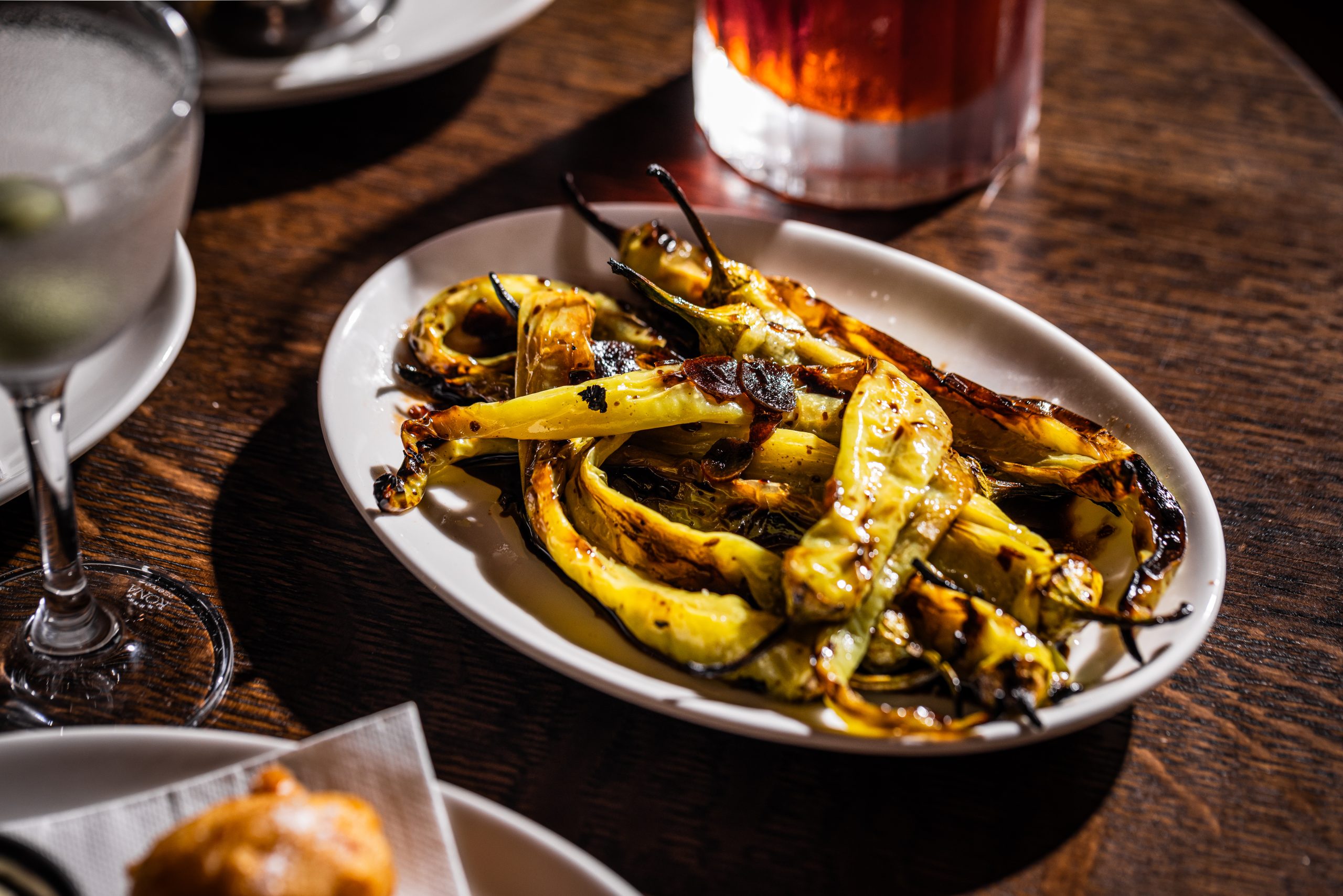
The back of the room overlooks a walled garden, with a giant ghost gum at its centre and views of neighbouring residential fences.

Chef Sitton says his team relishes the opportunity to cook from an expansive modern European repertoire with quality produce. The robust flavours and textures are centred around the smoky quality that comes from Josper charcoal grills, wood-fired ovens, and the rotisserie.
You can order steak frites with charred baby carrots, or baked market fish with a cheesy, potato gratin.
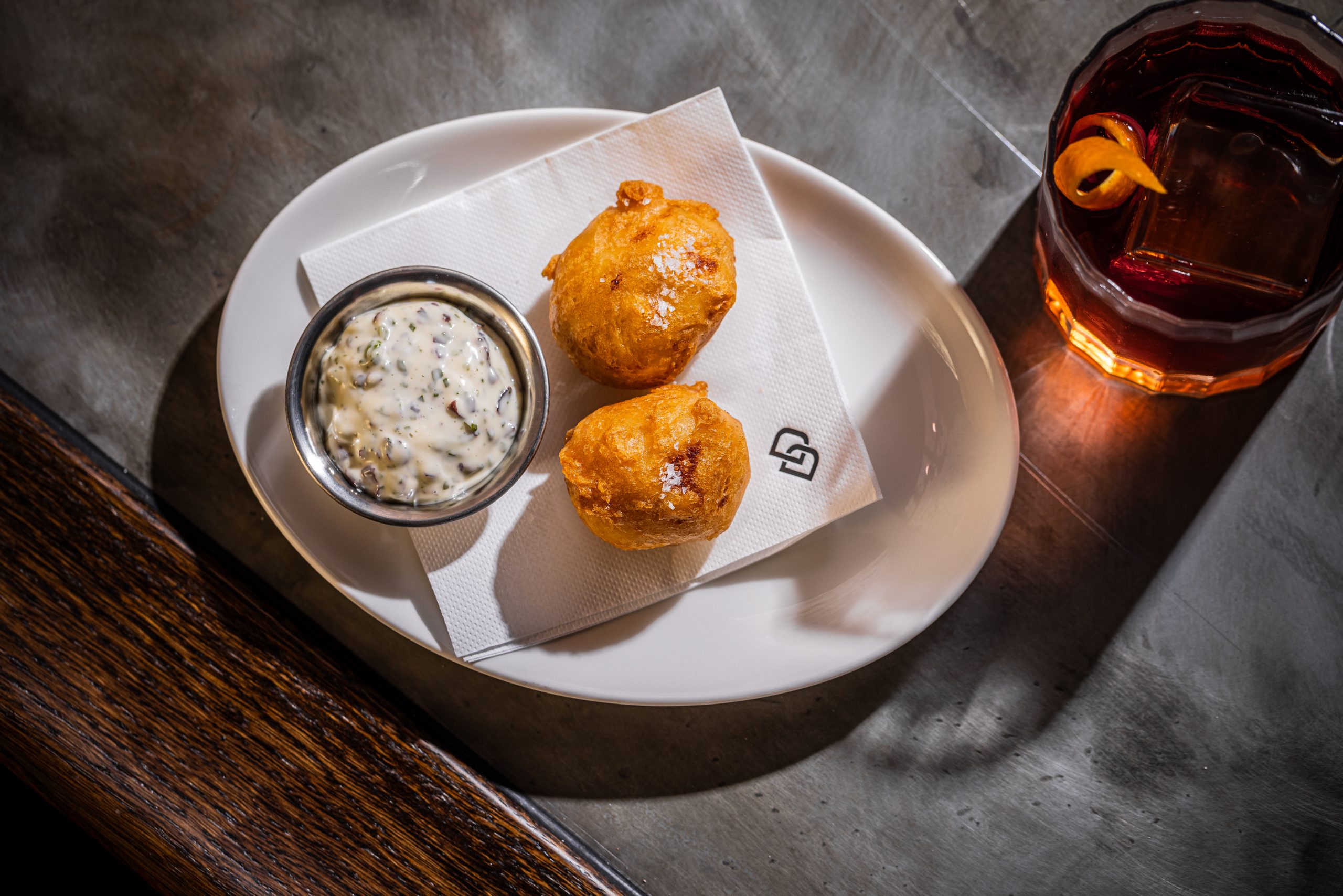
The Peninsula Hospitality Group, the team behind Dry Dock, is now looking to expand its foothold in Balmain by opening at least one other venue.
Visit for the food, stay for the vibe.
The Dry Dock, Public House & Dining Room, 22 Cameron Street, Balmain, NSW 2041. P: 02 9555 1306; drydock.com.au
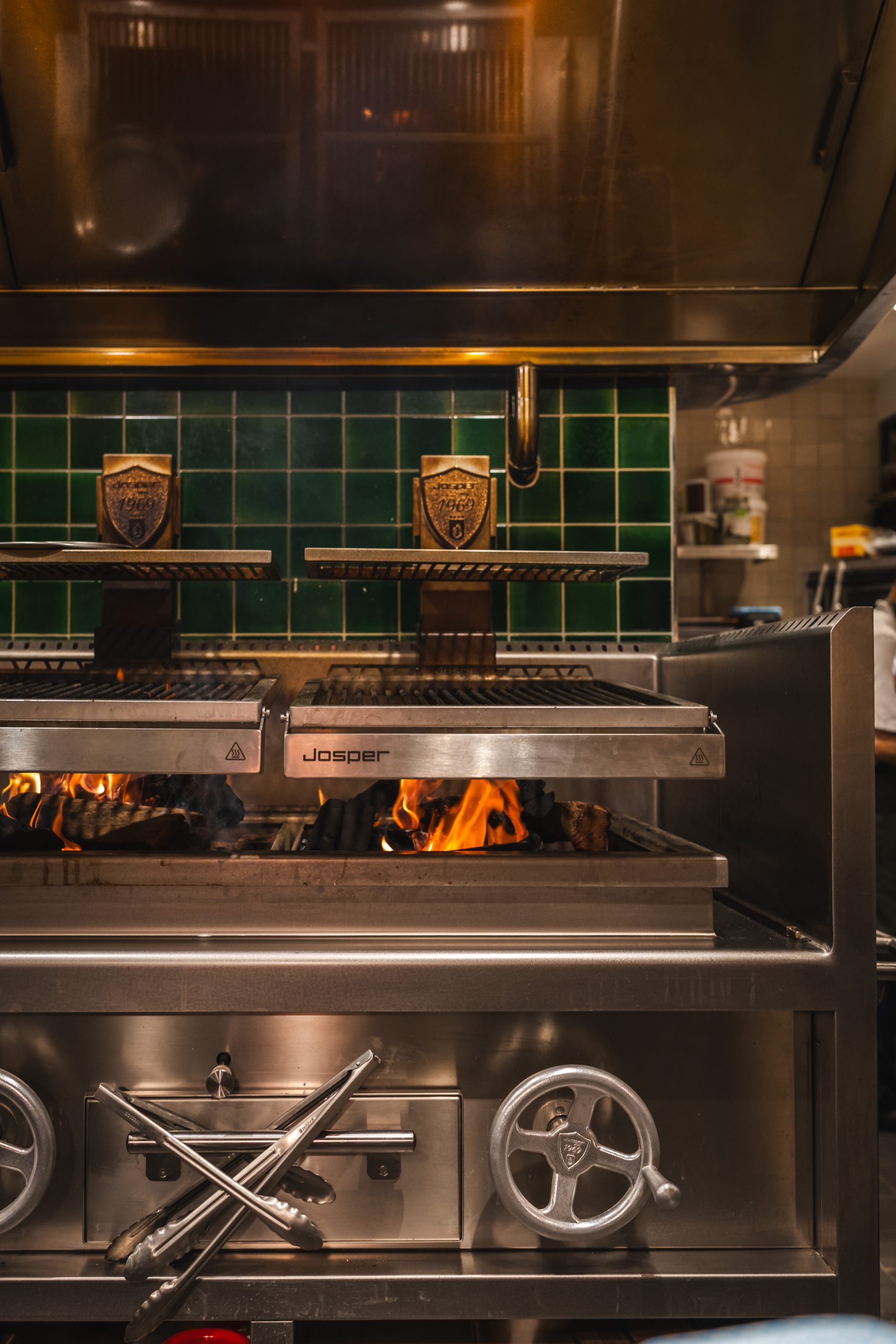
You may also like.
Animal Kingdom
A veritable menagerie of high-jewellery sparklers awaits this season.
Crocodiles, lions, snakes and flamingos have all found their way into magnificent high jewellery.
At Chaumet master craftsmen draw inspiration from the balletic flight of swallows. At Cartier a mischievous crocodile makes a cunning circle around the throat and at Paspaley 137 sapphires and gem bejewels fascinators attached to a pair of Keshi pearl studs.
Read on for ideas of how to spoil yourself or someone you love with something from the animal kingdom.
CARTIER
Crocodile necklace
White gold set with emeralds and brilliant-cut diamonds. POA; cartier.com.au
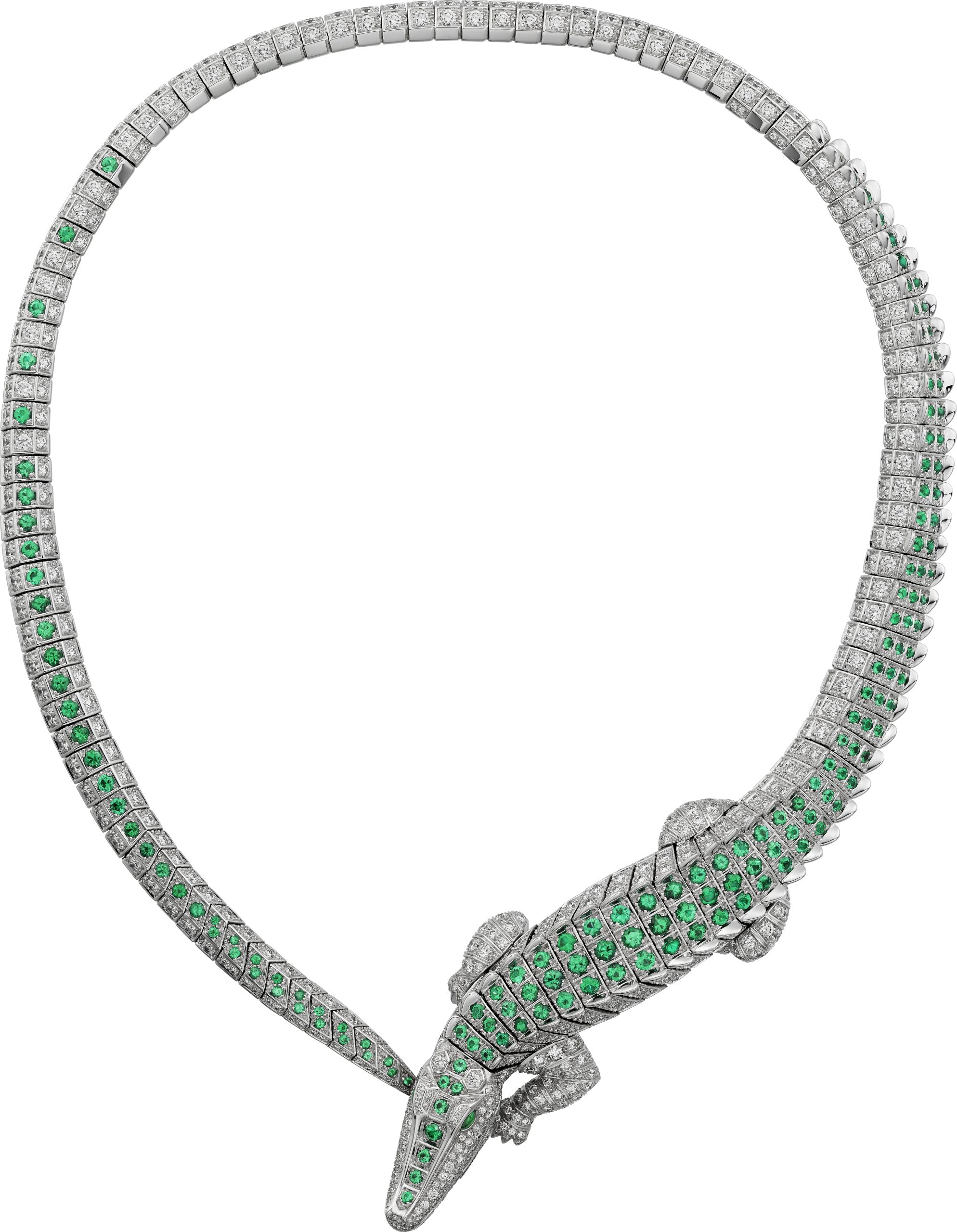
CHANEL
Lion solaire earrings 18k white gold and diamonds. $140,200; chanel.com
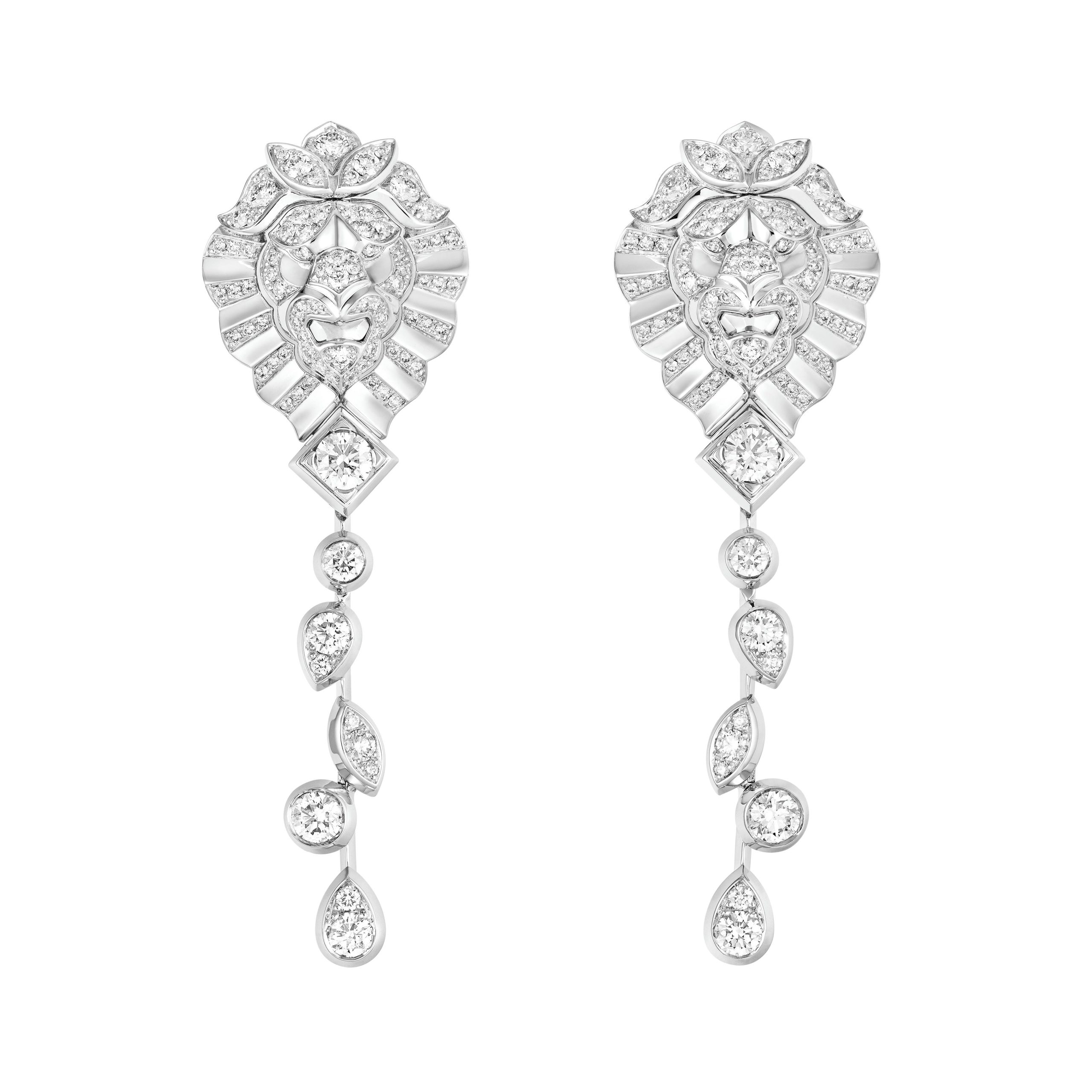
A LA VIEILLE RUSSIE
Victorian diamond fish brooch Pavé diamond trout set in silver and gold. $14,300; alvr.com

DAVID WEBB
Bird of paradise brooch Cabochon star sapphire, carved emerald and ruby leaves, brilliant-cut diamonds, 18k gold and platinum. POA; davidwebb.com
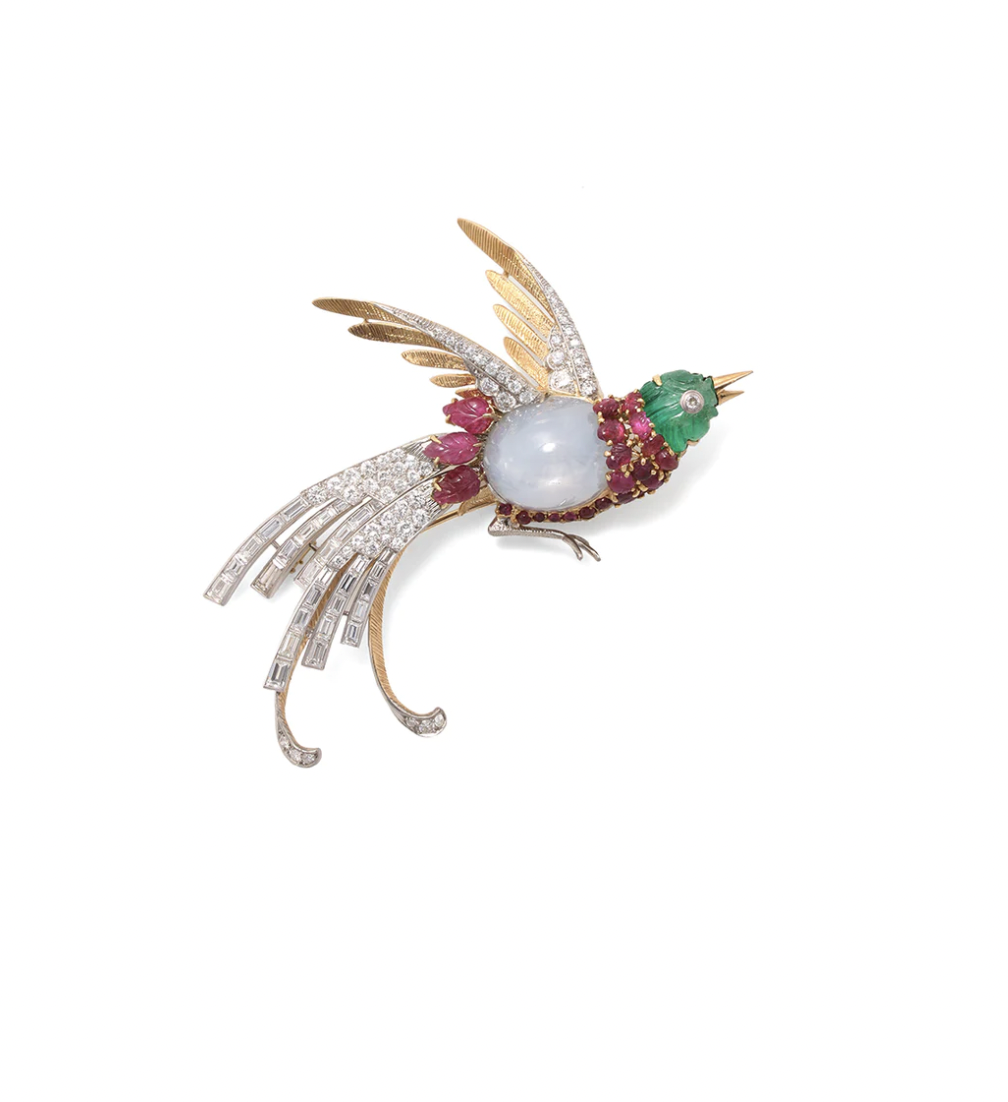 CHAUMET
CHAUMET
Capturing the aerial movements of swallows, in white and rose gold with marquise-cut diamonds. POA; chaumet.com
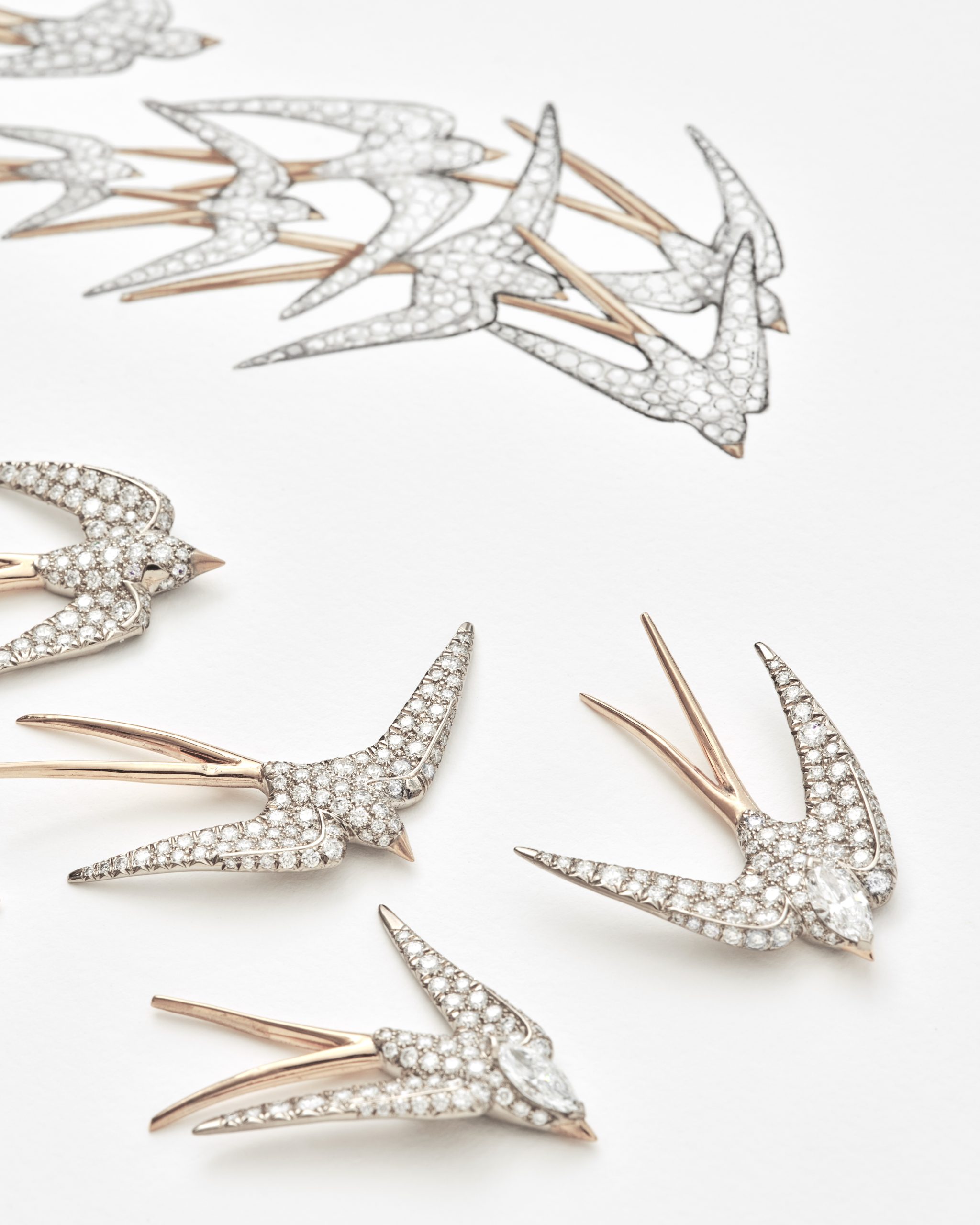
A LA VIEILLE RUSSIE
Mississippi River pearl flamingo brooch set Baguette diamond legs and brilliant-cut diamond head, tail and neck, and ruby eye. Circa 1930. $24,000; alvr.com
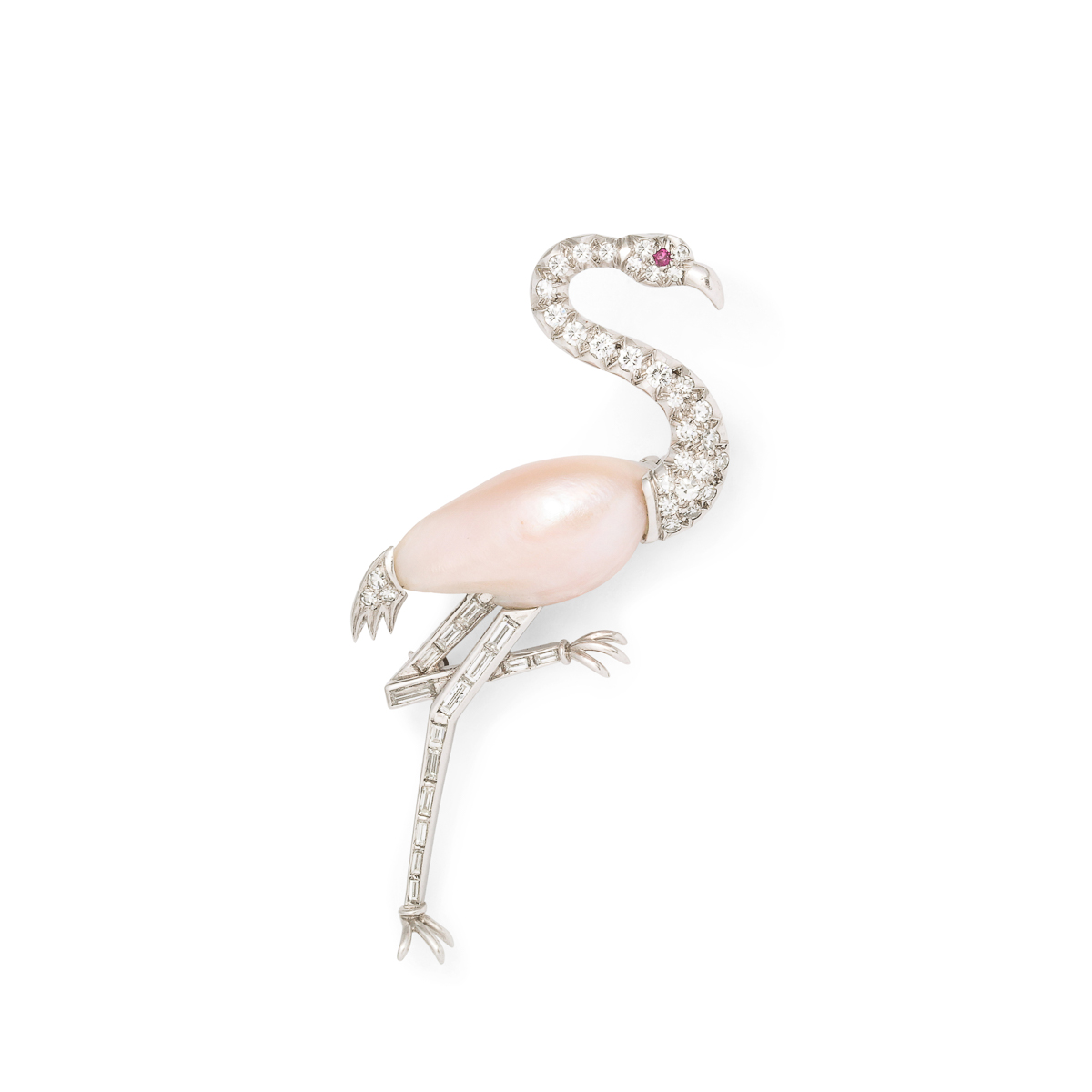
JEAN SCHLUMBERGER by Tiffany & Co.
Bird on a rock pendant
Platinum and 18k yellow gold, pink sapphires and diamonds (one of which is more than 15 carats). POA; tiffany.com
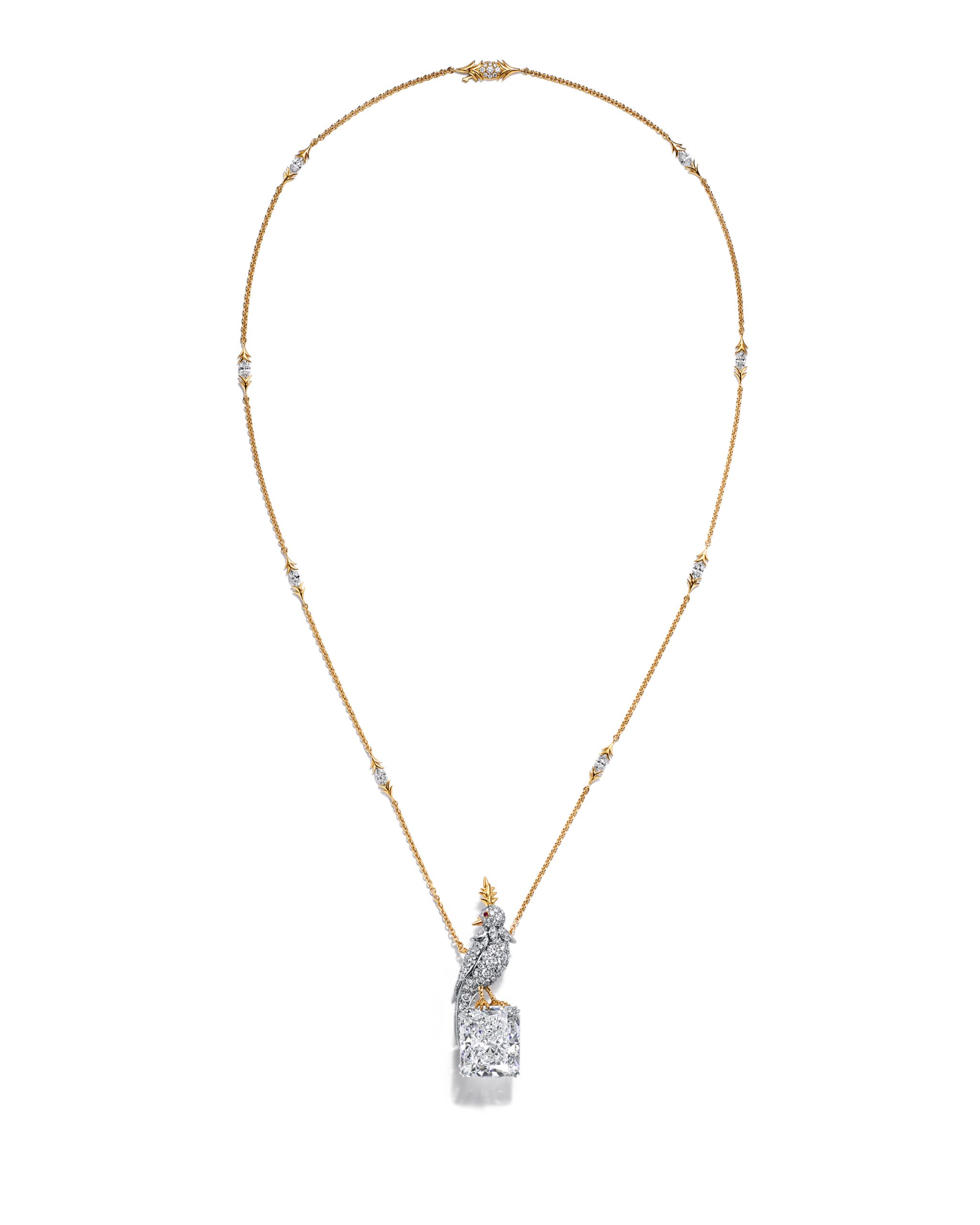
A LA VIEILLE RUSSIE
Antique green garnet frog brooch Demantoid garnet with old mine diamond eyes, set in gold
and platinum. $71,000; alvr.com
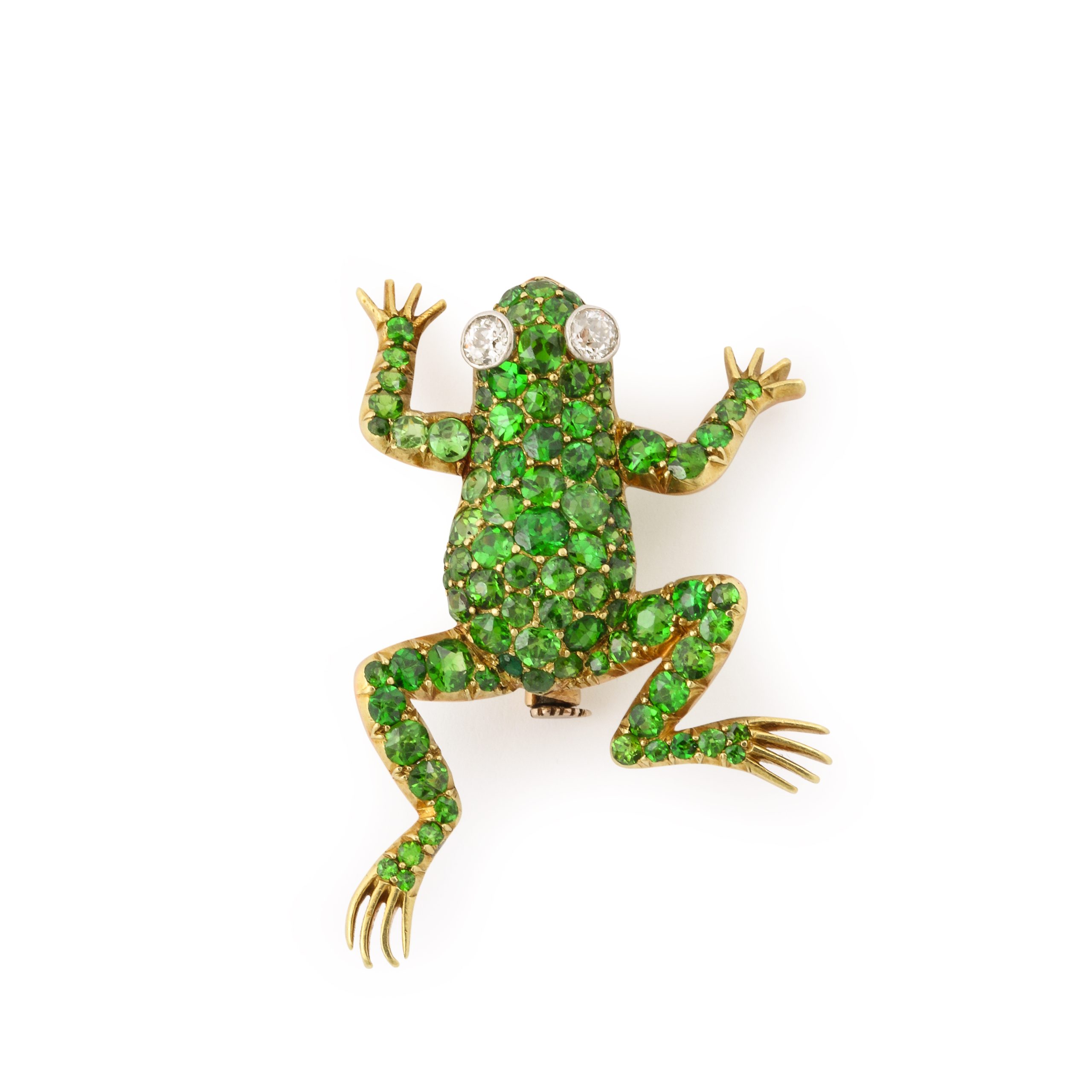
PASPALEY
Wild feather earring enhancer Featuring 43 white diamonds, 137 sapphires and 26 tsavorites set in 18k yellow gold. Keshi pearl studs sold separately. $11,800; paspaley.com
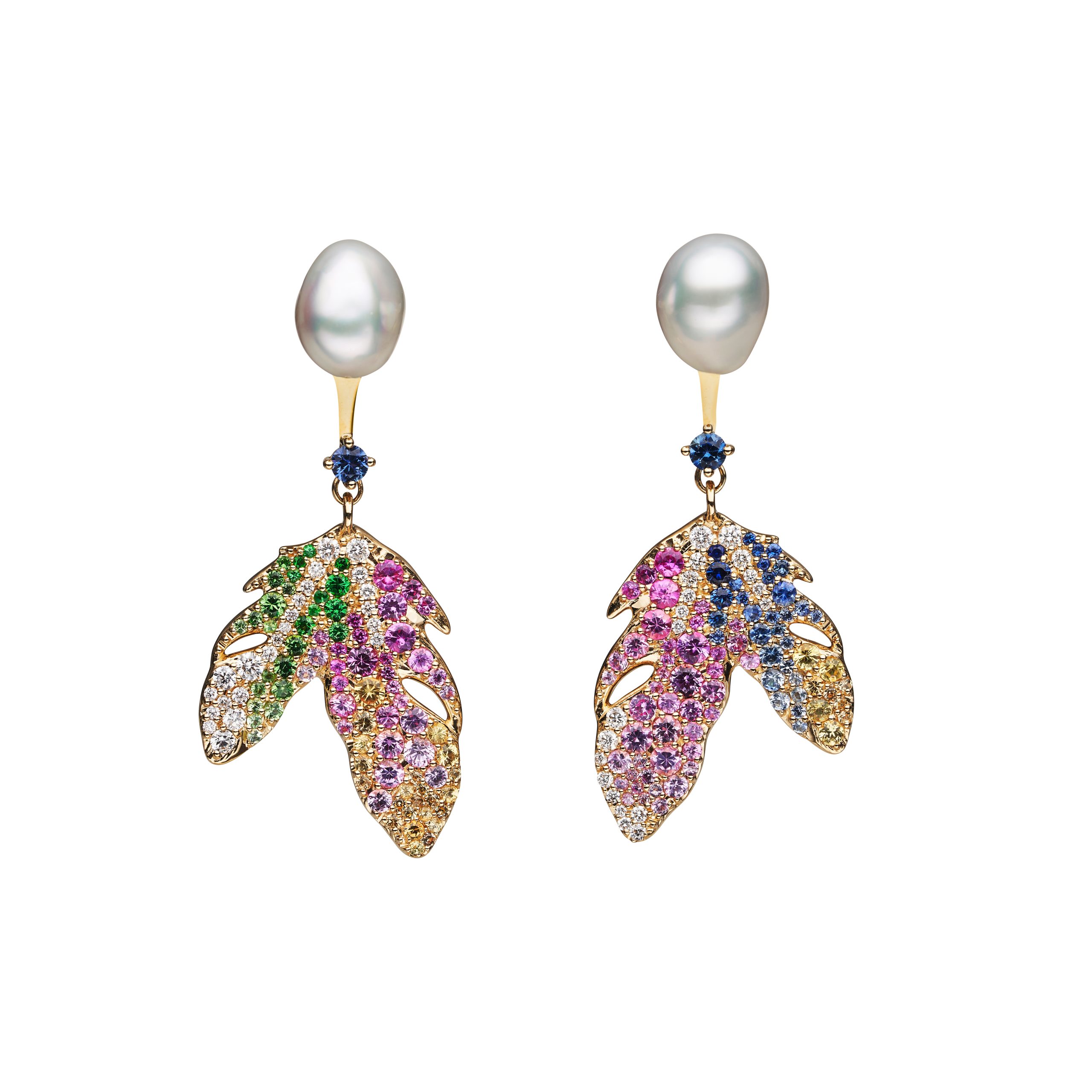
BULGARI
Mediterranean Sapphire Serpenti necklace, nine sapphires from Sri Lanka for a total of 40,81carats evoking snake’s scales are set in a precise and sinuous platinum and pavé diamond body construction culminating in a dramatic pendant tassel including 80 oval-shaped sapphire beads totaling 116 carats. POA’ Bulgari.com
